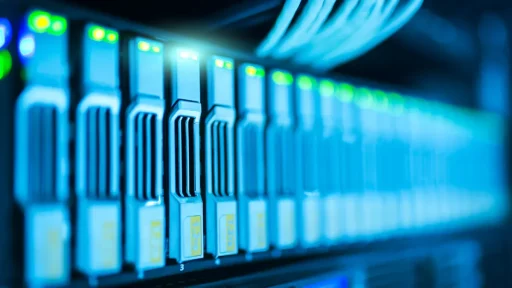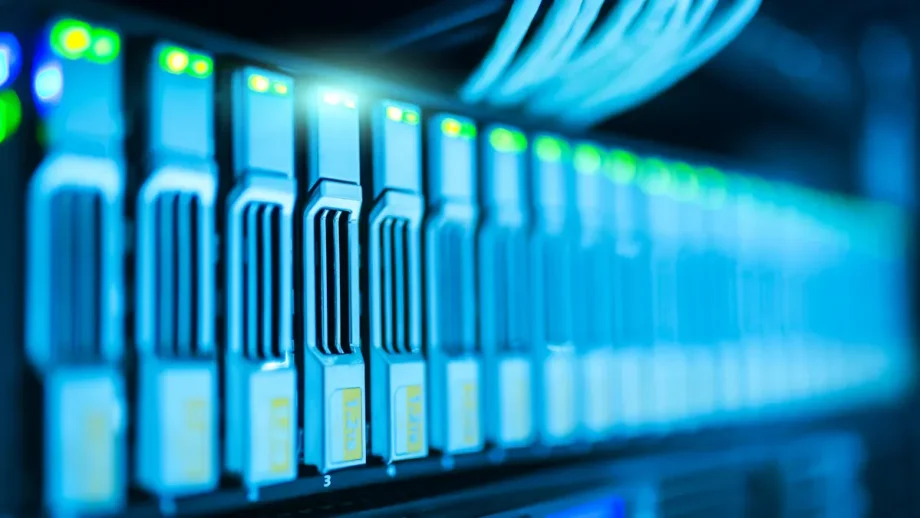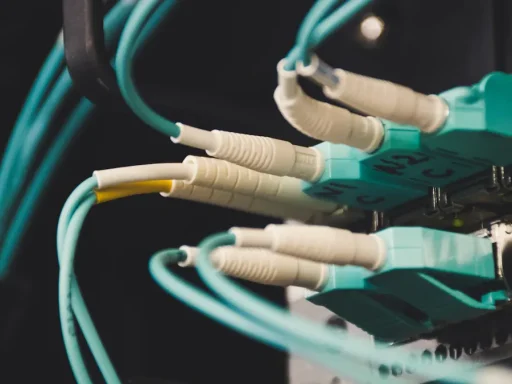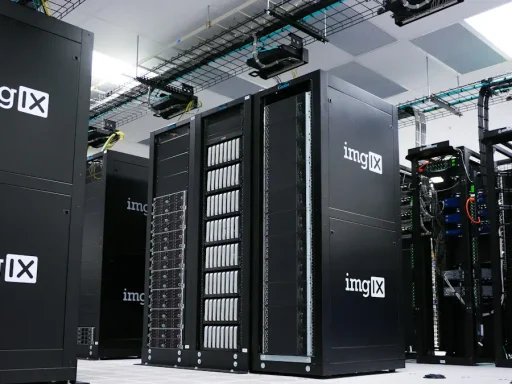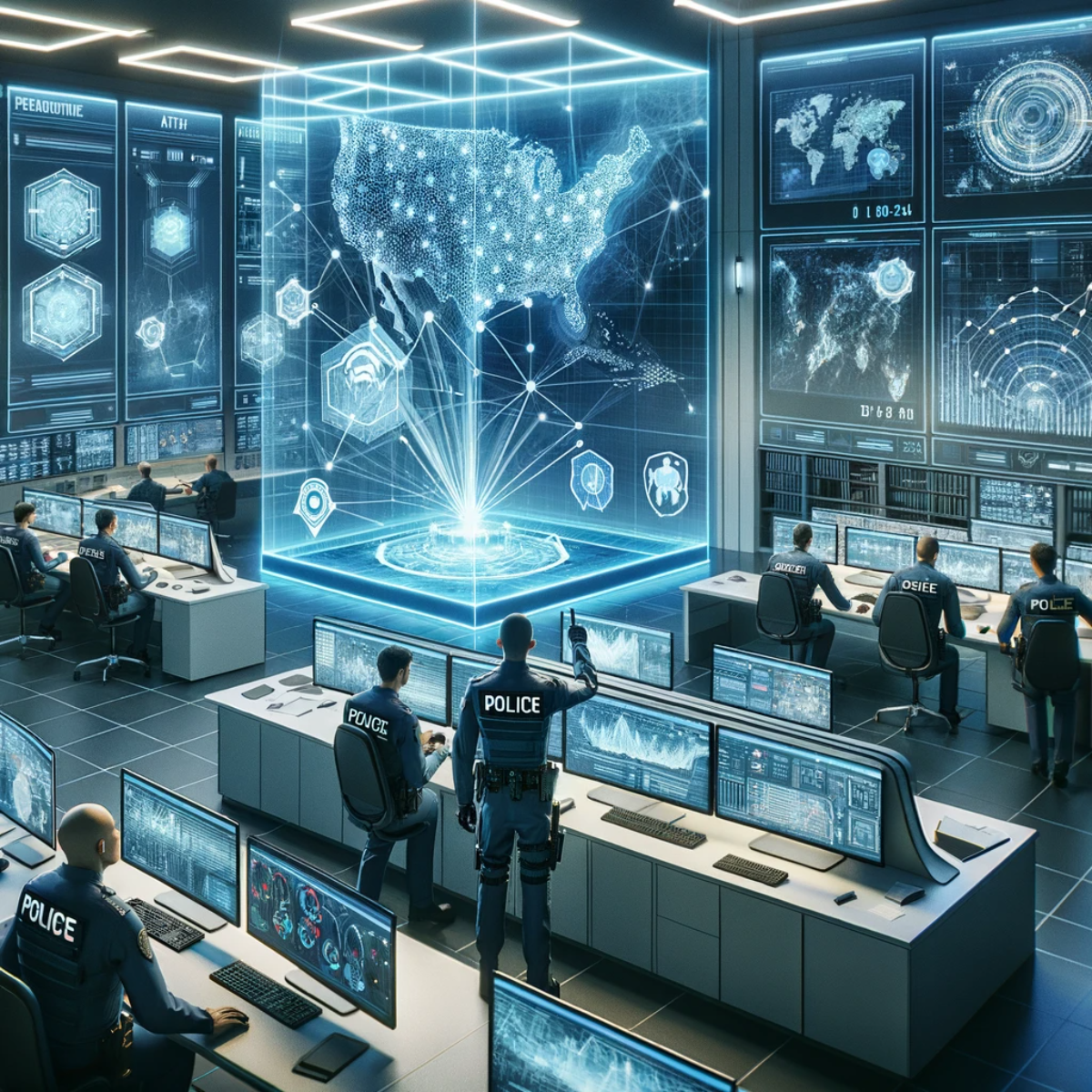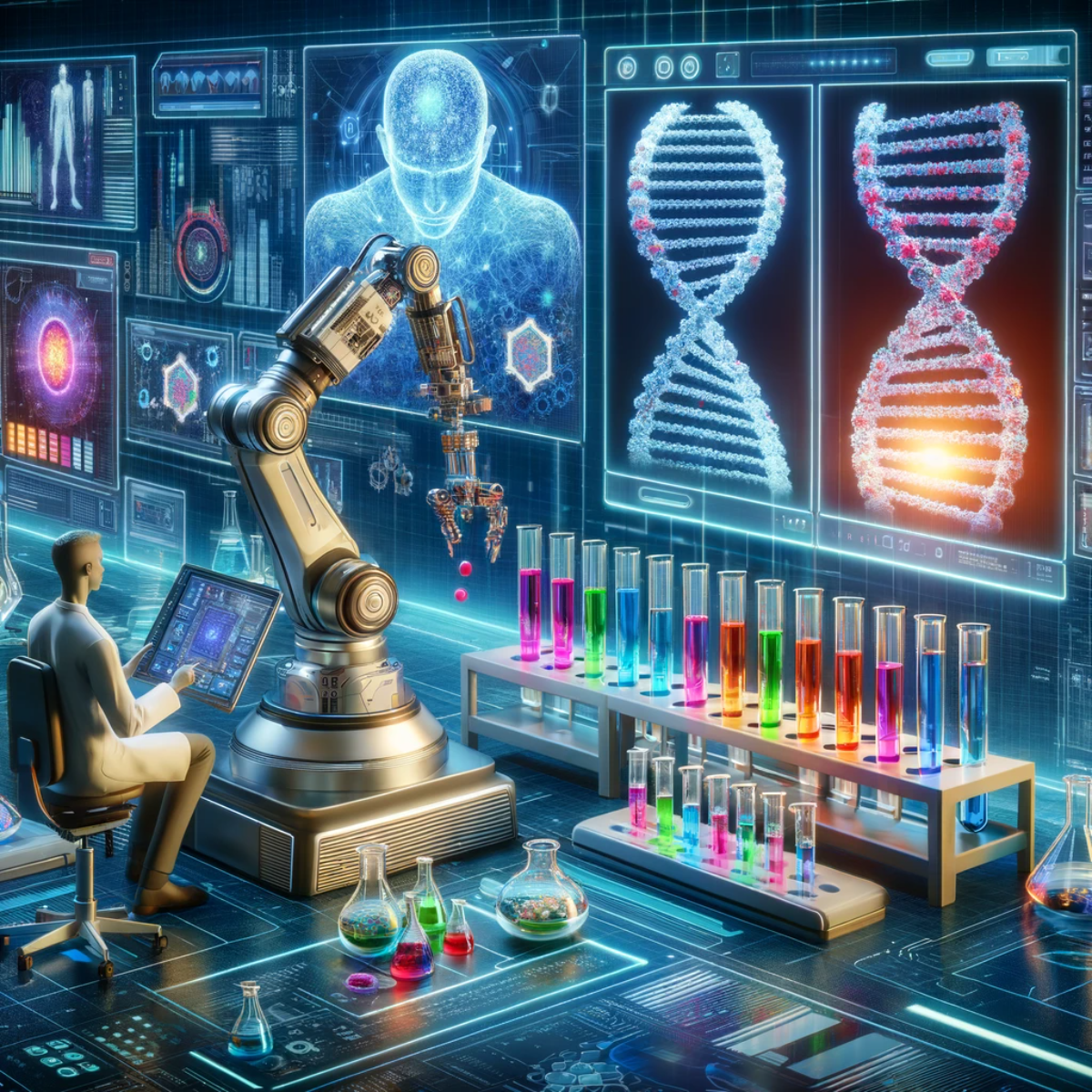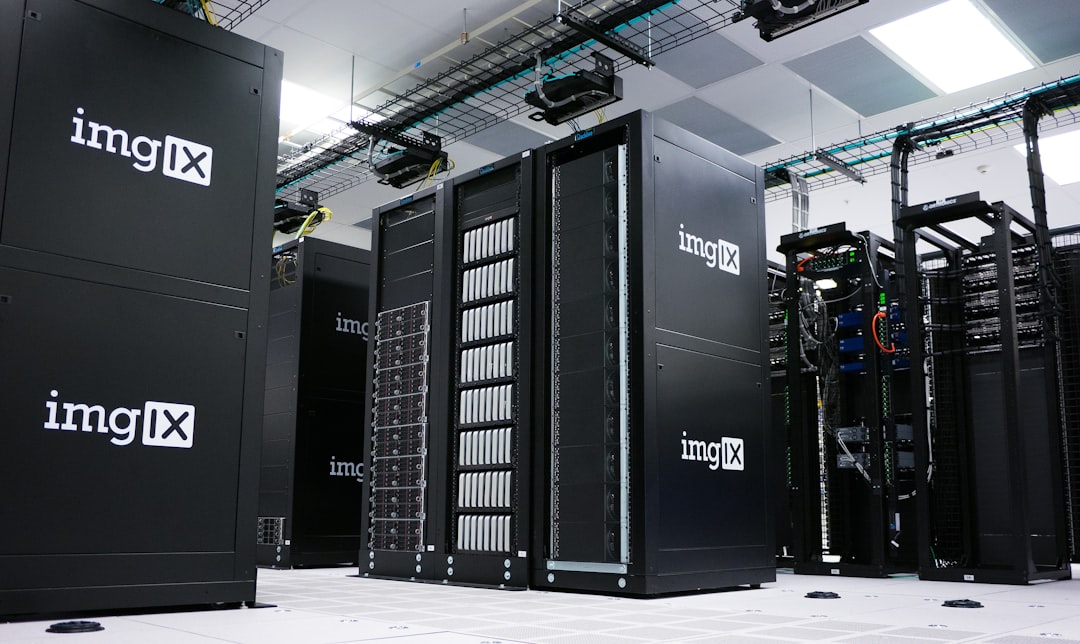In recent years, the use of artificial intelligence (AI) in disaster response and management has gained significant attention. AI has the potential to revolutionize the way we prepare for, respond to, and recover from natural disasters. By leveraging advanced algorithms and machine learning techniques, AI can assist in predicting and managing disasters, enhancing search and rescue operations, and enabling better decision-making during critical situations.
The importance of AI in improving disaster response and management cannot be overstated. Natural disasters such as hurricanes, earthquakes, and wildfires can cause immense damage to infrastructure, disrupt essential services, and result in the loss of lives. Traditional methods of disaster response and management often rely on human expertise and experience, which can be limited in scale and effectiveness. AI solutions have the potential to augment human capabilities by analyzing vast amounts of data, identifying patterns, and making predictions in real-time.
Key Takeaways
- AI solutions can greatly aid in disaster response and management.
- AI can assist in early warning systems, prediction models, search and rescue operations, and decision-making.
- Advantages of AI solutions include faster response times, improved accuracy, and reduced risk to human life.
- Challenges in developing AI solutions include data availability, ethical considerations, and technical limitations.
- The future of AI in disaster response and management presents both opportunities and challenges.
The role of AI in disaster response and management
AI can play a crucial role in disaster response and management by assisting in various aspects of the process. One key area where AI can make a significant impact is in predicting and managing disasters. By analyzing historical data, weather patterns, and other relevant information, AI algorithms can generate accurate predictions about the occurrence and severity of natural disasters. This information can help authorities take proactive measures to mitigate the impact of disasters and allocate resources more effectively.
Another area where AI can be beneficial is in search and rescue operations during disasters. AI-powered drones equipped with cameras and sensors can be deployed to locate survivors in hard-to-reach areas or areas that are unsafe for human rescuers. These drones can quickly scan large areas, identify signs of life, and relay real-time information back to rescue teams. This technology can significantly improve the efficiency and effectiveness of search and rescue operations, potentially saving more lives.
Advantages of AI solutions in disaster response and management
There are several advantages to using AI solutions in disaster response and management. One of the most significant advantages is the ability to achieve faster response times. AI algorithms can process vast amounts of data in real-time, enabling authorities to make quick decisions and take immediate action. This can be crucial in situations where every minute counts, such as during a hurricane or earthquake.
Another advantage of AI solutions is the improved accuracy in predicting and managing disasters. By analyzing historical data and current conditions, AI algorithms can generate highly accurate predictions about the occurrence and severity of natural disasters. This information can help authorities make informed decisions about evacuation orders, resource allocation, and emergency response plans. Improved accuracy in predicting disasters can save lives and minimize damage to infrastructure.
AI solutions also have the potential to enhance search and rescue operations during disasters. AI-powered drones can be deployed to locate survivors in areas that are difficult to access or unsafe for human rescuers. These drones can quickly scan large areas, identify signs of life, and relay real-time information back to rescue teams. This technology can significantly improve the efficiency and effectiveness of search and rescue operations, potentially saving more lives.
Challenges in developing AI solutions for disaster response and management
While AI solutions hold great promise for disaster response and management, there are several challenges that need to be addressed. One of the main challenges is the lack of data and resources. AI algorithms require large amounts of data to train and make accurate predictions. However, in many cases, data on past disasters may be limited or inaccessible. Additionally, deploying AI solutions requires significant resources, including computing power and infrastructure, which may not be readily available in disaster-prone areas.
Ethical considerations are another challenge in developing AI solutions for disaster response and management. AI algorithms rely on data that may contain biases or inaccuracies, which can lead to unfair or discriminatory outcomes. It is essential to ensure that AI systems are designed and implemented in a way that is fair, transparent, and accountable. Additionally, there are ethical considerations around the use of AI in decision-making during disasters, such as determining who gets access to limited resources or prioritizing certain groups over others.
Technical challenges also exist in developing AI solutions for disaster response and management. AI algorithms can be complex and require specialized knowledge and expertise to develop and deploy. Additionally, AI systems need to be robust and resilient to withstand the harsh conditions often encountered during disasters, such as power outages or communication failures. Overcoming these technical challenges requires collaboration between AI researchers, disaster management experts, and policymakers.
AI-powered early warning systems for natural disasters
One area where AI can make a significant impact is in the development of early warning systems for natural disasters. By analyzing historical data, weather patterns, and other relevant information, AI algorithms can generate accurate predictions about the occurrence and severity of natural disasters. This information can be used to issue timely warnings to the public and enable authorities to take proactive measures to mitigate the impact of disasters.
Several examples of AI-powered early warning systems already exist. For example, the European Space Agency’s (ESA) Sentinel-1 satellite uses radar technology to monitor ground deformation caused by earthquakes. By analyzing this data in real-time, AI algorithms can detect patterns that indicate an impending earthquake and issue warnings to affected areas. Similarly, the National Oceanic and Atmospheric Administration (NOAA) uses AI algorithms to analyze weather data and predict the path and intensity of hurricanes.
AI-based prediction models for disaster response and management


In addition to early warning systems, AI can also be used to develop prediction models that can help authorities anticipate the impact of disasters. By analyzing historical data, infrastructure maps, and other relevant information, AI algorithms can generate predictions about the areas that are likely to be affected by a disaster and the extent of the damage that may occur. This information can help authorities allocate resources more effectively and plan for post-disaster recovery.
One example of an AI-based prediction model is the Flood AI system developed by researchers at Stanford University. This system uses machine learning algorithms to analyze satellite imagery and predict the likelihood of flooding in different areas. By combining this information with data on population density and infrastructure, authorities can identify high-risk areas and take proactive measures to mitigate the impact of floods.
AI-assisted search and rescue operations during disasters
AI can also play a crucial role in search and rescue operations during disasters. AI-powered drones equipped with cameras and sensors can be deployed to locate survivors in hard-to-reach areas or areas that are unsafe for human rescuers. These drones can quickly scan large areas, identify signs of life, and relay real-time information back to rescue teams. This technology can significantly improve the efficiency and effectiveness of search and rescue operations, potentially saving more lives.
One example of AI-assisted search and rescue operations is the use of drones equipped with thermal imaging cameras. These drones can detect body heat signatures, even in low-light or obscured conditions, making it easier to locate survivors in disaster-stricken areas. Additionally, AI algorithms can be used to analyze the data collected by these drones and identify patterns that may indicate the presence of survivors or hazards.
AI-enabled decision-making for disaster response and management
During disasters, decision-making is often challenging due to the complexity and uncertainty of the situation. AI can assist in decision-making by analyzing vast amounts of data, identifying patterns, and making predictions in real-time. This information can help authorities make informed decisions about evacuation orders, resource allocation, and emergency response plans.
One example of AI-enabled decision-making is the use of predictive analytics to allocate resources during disasters. By analyzing data on population density, infrastructure, and other relevant factors, AI algorithms can generate predictions about the areas that are likely to be most affected by a disaster. This information can help authorities prioritize the allocation of resources, such as medical supplies, food, and water, to ensure that they reach the areas that need them the most.
Ethical considerations in developing AI solutions for disaster response and management
While AI solutions have the potential to greatly improve disaster response and management, it is essential to consider the ethical implications of their development and use. AI algorithms rely on data that may contain biases or inaccuracies, which can lead to unfair or discriminatory outcomes. It is crucial to ensure that AI systems are designed and implemented in a way that is fair, transparent, and accountable.
For example, when developing AI algorithms for predicting the impact of disasters, it is important to consider the potential biases in the data used to train these algorithms. If historical data reflects existing inequalities or biases, the predictions generated by AI algorithms may perpetuate these biases. It is essential to address these issues by using diverse and representative datasets and regularly evaluating and updating the algorithms to ensure fairness and accuracy.
Another ethical consideration is the use of AI in decision-making during disasters. For example, determining who gets access to limited resources or prioritizing certain groups over others can raise ethical concerns. It is important to ensure that AI systems are designed in a way that takes into account ethical principles such as fairness, equity, and transparency. Additionally, there should be mechanisms in place for human oversight and accountability to prevent the misuse or abuse of AI systems.
Future of AI in disaster response and management: Opportunities and challenges
The future of AI in disaster response and management holds great promise but also presents several challenges. On one hand, there are significant opportunities for AI to improve the speed, accuracy, and effectiveness of disaster response and management. AI-powered early warning systems, prediction models, search and rescue operations, and decision-making tools can all contribute to saving lives and minimizing damage during disasters.
However, there are also challenges that need to be addressed for the widespread adoption of AI solutions in disaster response and management. These challenges include the lack of data and resources, ethical considerations, and technical challenges in developing AI solutions. Overcoming these challenges requires collaboration between AI researchers, disaster management experts, policymakers, and other stakeholders.
In conclusion, AI solutions have the potential to revolutionize disaster response and management by improving prediction accuracy, enhancing search and rescue operations, and enabling better decision-making. However, it is crucial to address the challenges and ethical considerations associated with developing and implementing AI solutions. Further research and development are needed to ensure that AI systems are fair, transparent, and accountable. By harnessing the power of AI, we can better prepare for, respond to, and recover from natural disasters, ultimately saving lives and minimizing damage.
If you’re interested in the development of AI solutions for disaster response and management, you may also find this article on unlocking efficient performance and maximizing data center bandwidth to be of great value. It explores the importance of maximizing data center bandwidth and how it can significantly enhance the efficiency and effectiveness of disaster response efforts. To learn more about this topic, check out the article here.
FAQs
What is AI?
AI stands for Artificial Intelligence. It is a branch of computer science that deals with the creation of intelligent machines that can perform tasks that typically require human intelligence, such as visual perception, speech recognition, decision-making, and language translation.
How can AI be used for disaster response and management?
AI can be used for disaster response and management in various ways, such as predicting and detecting disasters, assessing damage, providing real-time information to responders, and optimizing resource allocation. AI can also be used to analyze social media data to identify areas that need help and to provide situational awareness to decision-makers.
What are some examples of AI solutions for disaster response and management?
Some examples of AI solutions for disaster response and management include drones equipped with AI-powered cameras for search and rescue operations, chatbots that can provide real-time information to affected communities, and predictive models that can forecast the impact of disasters and help responders prepare accordingly.
What are the benefits of using AI for disaster response and management?
The benefits of using AI for disaster response and management include faster and more accurate decision-making, improved situational awareness, better resource allocation, and reduced risk to responders. AI can also help to save lives and minimize the impact of disasters on affected communities.
What are the challenges of developing AI solutions for disaster response and management?
The challenges of developing AI solutions for disaster response and management include the need for large amounts of data to train AI models, the difficulty of integrating AI into existing systems and workflows, and the potential for bias in AI algorithms. There are also ethical considerations around the use of AI in disaster response and management, such as privacy concerns and the potential for unintended consequences.
Machine learning is a subset of artificial intelligence that focuses on the development of algorithms and models that allow computers to learn and make predictions or decisions without being explicitly programmed. In the context of video games, machine learning can be used to create intelligent and adaptive systems that enhance the gameplay experience for players.
The importance of machine learning in video game development cannot be overstated. It allows game developers to create more realistic and immersive environments, improve gameplay mechanics, and enhance the overall player experience. By using machine learning algorithms, game developers can train virtual characters to behave more intelligently, create dynamic and responsive environments, and even generate unique content based on player preferences.
Key Takeaways
- Machine learning is becoming increasingly important in video game development.
- Dynamic and responsive environments are crucial for creating immersive gaming experiences.
- Machine learning algorithms can be used to create more realistic and unpredictable environments.
- Advantages of using machine learning in video games include improved gameplay and reduced development time.
- Challenges of implementing machine learning in video games include data collection and processing limitations.
Understanding Dynamic and Responsive Environments in Video Games
Dynamic and responsive environments refer to game worlds that can change and adapt based on player actions or external factors. These environments are designed to provide a more immersive and engaging experience for players by creating a sense of realism and interactivity.
Examples of dynamic and responsive environments in video games include open-world games like “Grand Theft Auto V” or “The Legend of Zelda: Breath of the Wild,” where the world reacts to the player’s actions in real-time. In these games, the weather can change, NPCs can have their own schedules and routines, and the world can evolve based on the player’s choices.
The Role of Machine Learning in Creating Dynamic Environments
Machine learning plays a crucial role in creating dynamic environments in video games. By using machine learning algorithms, game developers can train virtual characters to adapt their behavior based on player actions or external stimuli. This allows for more realistic and immersive gameplay experiences.
For example, in a first-person shooter game, machine learning algorithms can be used to train enemy AI to learn from the player’s behavior and adapt their tactics accordingly. This creates a more challenging and engaging experience for the player, as they have to constantly adapt their strategies to overcome the AI’s evolving behavior.
Furthermore, machine learning can also be used to generate dynamic content in video games. For instance, in a procedural generation system, machine learning algorithms can analyze player preferences and generate unique levels or quests that cater to the player’s individual playstyle. This not only adds replayability to the game but also creates a more personalized experience for each player.
Machine Learning Algorithms Used in Video Games
There are several machine learning algorithms that are commonly used in video games. These algorithms can be categorized into supervised learning, unsupervised learning, and reinforcement learning.
Supervised learning algorithms are used when there is a labeled dataset available for training. These algorithms learn from the labeled data and make predictions or decisions based on the patterns they have learned. In video games, supervised learning algorithms can be used to train AI characters to recognize and respond to specific player actions or behaviors.
Unsupervised learning algorithms, on the other hand, are used when there is no labeled dataset available. These algorithms learn from the input data without any guidance and try to find patterns or relationships within the data. In video games, unsupervised learning algorithms can be used to cluster similar player behaviors or preferences and create personalized experiences for each player.
Reinforcement learning algorithms are used when an agent learns to interact with an environment through trial and error. The agent receives feedback in the form of rewards or penalties based on its actions, and it learns to maximize its rewards over time. In video games, reinforcement learning algorithms can be used to train AI characters to learn from their mistakes and improve their performance over time.
Advantages of Using Machine Learning in Video Games
Using machine learning in video games offers several advantages that enhance the gameplay experience for players.
Improved gameplay experience: Machine learning allows game developers to create more intelligent and adaptive AI characters that provide a more challenging and engaging experience for players. This leads to a more immersive and enjoyable gameplay experience.
Increased player engagement: By using machine learning algorithms to generate dynamic content or personalize the game experience, players are more likely to be engaged and invested in the game. This can lead to increased player retention and a larger player base.
Enhanced game design: Machine learning can be used to analyze player behavior and preferences, which can inform game designers on how to improve the game mechanics or create new features that cater to the players’ needs. This leads to a more refined and polished game design.
Challenges of Implementing Machine Learning in Video Games


While machine learning offers numerous benefits for video game development, there are also several challenges that need to be addressed.
Technical challenges: Implementing machine learning algorithms in video games requires significant computational resources and expertise. Game developers need to have a deep understanding of machine learning techniques and how to integrate them into the game engine.
Ethical considerations: Machine learning algorithms can sometimes exhibit biased or unfair behavior, which can negatively impact the gameplay experience. Game developers need to ensure that their machine learning systems are fair and unbiased, and that they do not perpetuate harmful stereotypes or discriminatory behavior.
Cost implications: Implementing machine learning in video games can be costly, both in terms of computational resources and development time. Game developers need to carefully consider the cost implications of using machine learning algorithms and weigh them against the potential benefits.
Real-World Applications of Machine Learning in Video Games
There are several examples of video games that use machine learning to enhance the gameplay experience.
One such example is “Middle-earth: Shadow of Mordor,” where the game uses a machine learning algorithm called the Nemesis System. This system creates unique enemies for each player based on their actions and choices in the game. The enemies remember past encounters with the player and adapt their behavior accordingly, creating a personalized and dynamic gameplay experience.
Another example is “No Man’s Sky,” an open-world space exploration game that uses machine learning algorithms to generate a vast and procedurally generated universe. The game uses these algorithms to create unique planets, creatures, and ecosystems based on mathematical models and player preferences. This allows for an infinite number of possibilities and a truly immersive and dynamic game world.
Future of Machine Learning in Video Game Development
The future of machine learning in video game development looks promising. As technology continues to advance, we can expect to see more sophisticated machine learning algorithms being used in video games.
One potential advancement is the use of deep learning algorithms, which are capable of learning from large amounts of data and extracting complex patterns. These algorithms can be used to create more realistic and intelligent AI characters, as well as generate more detailed and immersive game worlds.
Another potential advancement is the integration of machine learning with virtual reality (VR) and augmented reality (AR) technologies. By combining machine learning with VR/AR, game developers can create even more immersive and interactive experiences for players.
Examples of Video Games Using Machine Learning
There are several video games that have successfully integrated machine learning into their gameplay mechanics.
“Overwatch” is a popular team-based first-person shooter game that uses machine learning algorithms to analyze player behavior and detect cheating or toxic behavior. The game uses these algorithms to identify players who are engaging in unfair practices or exhibiting toxic behavior, and takes appropriate actions to maintain a fair and enjoyable gameplay experience for all players.
“Horizon Zero Dawn” is an action role-playing game that uses machine learning algorithms to create intelligent and adaptive enemies. The game’s AI characters learn from the player’s actions and adapt their tactics accordingly, creating a challenging and dynamic gameplay experience.
The Impact of Machine Learning on Video Game Development
In conclusion, machine learning has had a significant impact on video game development. It has allowed game developers to create more realistic and immersive environments, improve gameplay mechanics, and enhance the overall player experience. By using machine learning algorithms, game developers can train virtual characters to behave more intelligently, create dynamic and responsive environments, and even generate unique content based on player preferences.
While there are challenges to implementing machine learning in video games, such as technical constraints and ethical considerations, the benefits far outweigh the drawbacks. Machine learning has the potential to revolutionize the way video games are developed and played, and we can expect to see even more sophisticated and intelligent games in the future.
If you’re interested in the intersection of technology and gaming, you may also want to check out this article on datacenterinfo.com: “The Easiest Way to Understand Multi-Cloud Infrastructure.” In this piece, the author breaks down the concept of multi-cloud infrastructure and explains how it can revolutionize the way businesses handle their data storage and processing needs. With the increasing complexity of video games and the need for dynamic and responsive environments, understanding multi-cloud infrastructure can provide valuable insights into how machine learning can be leveraged to create immersive gaming experiences. To learn more about this topic, click here.
FAQs
What is machine learning?
Machine learning is a type of artificial intelligence that allows computer systems to automatically improve their performance on a specific task through experience.
How is machine learning used in video games?
Machine learning is used in video games to create dynamic and responsive environments that can adapt to the player’s actions and behavior.
What are some examples of machine learning in video games?
Examples of machine learning in video games include adaptive difficulty, procedural content generation, and personalized game experiences.
What is adaptive difficulty?
Adaptive difficulty is a machine learning technique that adjusts the difficulty of a game based on the player’s skill level and performance.
What is procedural content generation?
Procedural content generation is a machine learning technique that creates game content, such as levels, environments, and characters, automatically based on predefined rules and algorithms.
How does machine learning create personalized game experiences?
Machine learning creates personalized game experiences by analyzing the player’s behavior and preferences and adapting the game accordingly, such as recommending content or adjusting the game difficulty.
What are the benefits of using machine learning in video games?
The benefits of using machine learning in video games include creating more engaging and immersive experiences, improving game balance and fairness, and reducing development time and costs.
Artificial Intelligence (AI) has made significant advancements in various industries, and the music industry is no exception. AI technology has revolutionized the way music is composed and produced, offering new possibilities and opportunities for musicians, producers, and listeners alike. From generating original compositions to enhancing the production process, AI has become an invaluable tool in the music industry.
The importance of AI in the music industry cannot be overstated. It has opened up new avenues for creativity and innovation, allowing musicians to explore new sounds and styles that were previously unimaginable. AI has also improved the efficiency and quality of music production, enabling artists to create polished and professional-sounding tracks with ease. Additionally, AI-powered music recommendation systems have personalized the listening experience for consumers, helping them discover new music that aligns with their preferences.
Key Takeaways
- AI is being increasingly used in the music industry for both composition and production.
- AI can offer advantages such as increased efficiency and quality, but also has limitations in terms of creativity and originality.
- AI-generated music can be both creative and original, but there are concerns about the role of human input and the potential for copyright infringement.
- The future of music composition and production with AI is likely to involve a balance between technology and artistry, with AI enabling new forms of collaboration and personalization.
- AI-powered music recommendation systems have the potential to enhance the listening experience, but must also consider ethical and legal considerations.
The Role of AI in Music Composition: Advantages and Limitations
AI has brought numerous advantages to music composition. One of the key advantages is its ability to generate vast amounts of musical material quickly. With AI algorithms, composers can input certain parameters or musical styles, and the AI can generate melodies, harmonies, and even entire compositions based on those inputs. This saves composers time and allows them to explore a wide range of musical ideas.
Another advantage of using AI in music composition is its ability to push creative boundaries. AI algorithms can analyze vast amounts of existing music data and identify patterns and trends that humans may not have noticed. This allows composers to experiment with new musical ideas and styles that they may not have considered otherwise.
However, there are limitations to AI in music composition. One limitation is that AI-generated music may lack the emotional depth and human touch that comes from a human composer. While AI can mimic certain musical styles or genres, it may struggle to capture the nuances and subtleties that make music truly expressive and emotional.
Despite these limitations, there have been notable examples of AI-generated music that have garnered attention and acclaim. For example, in 2016, an AI algorithm created by researchers at Sony Computer Science Laboratory composed a piece of music that was performed by the London Symphony Orchestra. The composition, titled “Daddy’s Car,” was inspired by The Beatles and showcased the potential of AI in music composition.
AI-Generated Music: Exploring Creativity and Originality
Contrary to popular belief, AI-generated music can be creative and original. While AI algorithms are trained on existing musical data, they have the ability to generate new and unique compositions that go beyond mere imitation. By analyzing patterns and trends in existing music, AI algorithms can create compositions that are innovative and unexpected.
One example of AI-generated music that showcases creativity and originality is the work of composer and programmer David Cope. Cope developed an AI program called “Emily Howell” that is capable of composing original music in various styles. The compositions generated by Emily Howell have been praised for their complexity and emotional depth, challenging the notion that AI-generated music is devoid of creativity.
Another example is the work of musician and composer Holly Herndon. Herndon collaborated with an AI program called “Spawn” to create her album “PROTO.” Spawn was trained on Herndon’s own voice and musical ideas, allowing it to generate new musical material based on her input. The result is a unique blend of human and AI creativity that pushes the boundaries of what is possible in music composition.
AI-Driven Music Production: Improving Efficiency and Quality
AI has also made significant contributions to the field of music production. One of the key ways in which AI improves efficiency is through automated processes. For example, AI algorithms can analyze audio files and automatically detect and remove background noise or unwanted artifacts, saving producers time and effort.
AI can also enhance the quality of music production. For example, AI algorithms can analyze audio files and automatically adjust levels, EQ, and compression to achieve a balanced and professional sound. This eliminates the need for manual adjustments and ensures that the final product meets industry standards.
Additionally, AI-driven music production tools have emerged that offer new possibilities for producers. For example, there are AI-powered plugins that can generate realistic virtual instruments, allowing producers to create lifelike orchestral arrangements without the need for a full orchestra. There are also AI algorithms that can analyze audio files and automatically generate accompanying harmonies or counter melodies, providing producers with new creative options.
The Future of Music Composition and Production with AI
The future of AI in music composition and production is promising. As AI technology continues to advance, we can expect to see even more sophisticated algorithms that can generate highly original and creative compositions. These algorithms may be able to capture the emotional depth and human touch that is often associated with human composers.
In terms of music production, AI is likely to play an even larger role in improving efficiency and quality. We can expect to see more advanced AI-driven tools that automate various aspects of the production process, allowing producers to focus on the creative aspects of their work. Additionally, AI algorithms may become more integrated into digital audio workstations (DAWs), providing producers with real-time feedback and suggestions as they work.
AI and Music Copyright: Legal and Ethical Considerations


The rise of AI-generated music raises important legal and ethical considerations surrounding copyright. Currently, copyright laws protect original works of authorship created by humans. However, with the emergence of AI-generated music, questions arise about who owns the rights to these compositions.
From a legal standpoint, it is unclear whether AI-generated music can be considered an original work of authorship. Since AI algorithms are trained on existing musical data, some argue that the resulting compositions are merely derivative works. Others argue that the creative input of the AI algorithm should be recognized and protected.
From an ethical standpoint, there are concerns about the potential devaluation of human creativity. If AI algorithms can generate music that is indistinguishable from human compositions, it may undermine the value and recognition of human artistic expression. Additionally, there are concerns about the potential loss of livelihood for musicians and composers if AI-generated music becomes more prevalent.
To address these legal and ethical considerations, copyright laws may need to adapt. One possible solution is to recognize AI algorithms as co-creators of the music and grant them some form of legal protection. This would ensure that the creative input of the AI is acknowledged and protected, while still recognizing the importance of human creativity.
The Impact of AI on the Music Industry: Opportunities and Challenges
The use of AI in the music industry presents both opportunities and challenges. One of the key opportunities is the ability to automate various aspects of music production, allowing artists to focus more on the creative process. This can lead to increased productivity and efficiency, as well as new possibilities for experimentation and innovation.
AI also presents opportunities for personalized music experiences. With AI-powered music recommendation systems, listeners can discover new music that aligns with their preferences and tastes. This can lead to a more engaging and enjoyable listening experience, as well as increased exposure for artists.
However, there are also challenges that the music industry may face with the use of AI. One challenge is the potential devaluation of human creativity. If AI-generated music becomes more prevalent, it may undermine the value and recognition of human artistic expression. Additionally, there are concerns about the potential loss of livelihood for musicians and composers if AI-generated music replaces human compositions.
AI-Enabled Music Collaboration: Enhancing the Creative Process
AI has the potential to enhance the creative process in music collaboration. By analyzing patterns and trends in existing musical data, AI algorithms can generate musical ideas and suggestions that can inspire and inform the collaborative process. This can lead to new and innovative compositions that would not have been possible without the input of AI.
There are already examples of AI-enabled music collaboration tools that are being used by musicians and producers. For example, there are AI algorithms that can analyze audio files and automatically generate accompanying parts or harmonies. This can be particularly useful in collaborative settings, where musicians can build upon the AI-generated material to create a more complex and layered composition.
AI-Powered Music Recommendation Systems: Personalizing the Listening Experience
AI-powered music recommendation systems have become increasingly popular in recent years. These systems use AI algorithms to analyze user data, such as listening history and preferences, to generate personalized music recommendations. This personalization enhances the listening experience for consumers, allowing them to discover new music that aligns with their tastes.
One successful example of a music recommendation system is Spotify’s Discover Weekly. This feature generates a personalized playlist for each user based on their listening habits and preferences. By analyzing data from millions of users, Spotify’s AI algorithms can identify patterns and trends and recommend new music that users are likely to enjoy.
Another example is Pandora’s Music Genome Project. This project uses AI algorithms to analyze the musical characteristics of songs, such as melody, harmony, and rhythm, to generate personalized recommendations. By understanding the musical preferences of each user, Pandora can create a customized listening experience that is tailored to their tastes.
The Human Touch in AI-Driven Music: Balancing Technology and Artistry
While AI has made significant advancements in music composition and production, it is important to recognize the importance of the human touch in music. Despite the capabilities of AI algorithms, human input is still necessary in the creative process.
AI algorithms may be able to generate compositions or suggest creative ideas, but it is ultimately up to the human composer or producer to shape and refine those ideas into a cohesive and expressive piece of music. The human touch is what adds emotion, nuance, and individuality to a composition or production.
Furthermore, the music industry relies on the unique perspectives and experiences of human artists to create meaningful and impactful music. While AI algorithms can analyze existing musical data, they cannot replicate the lived experiences and emotions that inform human artistic expression.
In conclusion, AI has had a profound impact on the music industry, from composition to production to the listening experience. It has opened up new possibilities for creativity and innovation, while also presenting challenges and ethical considerations. As AI technology continues to advance, it is important to strike a balance between technology and artistry, recognizing the value of both human creativity and AI-driven innovation in the music industry.
If you’re interested in the intersection of artificial intelligence and the music industry, you won’t want to miss this fascinating article on Composing Music and Enhancing Production. It delves into how AI is revolutionizing the way music is created and produced, with algorithms composing original pieces and enhancing the production process. To learn more about this exciting development, check out the article here.
FAQs
What is AI in the music industry?
AI in the music industry refers to the use of artificial intelligence technology to compose music, enhance production, and improve the overall music experience for listeners.
How does AI compose music?
AI composes music by using algorithms that analyze existing music and create new compositions based on patterns and styles found in the analyzed music. AI can also generate music based on specific parameters set by the user.
What are the benefits of using AI in music production?
The benefits of using AI in music production include increased efficiency, improved accuracy, and the ability to create unique sounds and compositions that would be difficult or impossible to create manually.
Can AI replace human musicians?
AI cannot completely replace human musicians, as music is a creative and emotional art form that requires human interpretation and expression. However, AI can assist human musicians in the creative process and enhance the overall music production.
What are some examples of AI in the music industry?
Examples of AI in the music industry include AI-powered music composition software, AI-assisted music production tools, and AI-powered music recommendation systems that suggest new music based on a user’s listening history and preferences.
Is AI in the music industry a threat to human musicians?
AI in the music industry is not a threat to human musicians, as it is a tool that can be used to enhance the creative process and improve the overall music experience for listeners. Human musicians will always play a vital role in the music industry.
Artificial Intelligence (AI) has emerged as a powerful tool in various industries, and its potential in energy management is no exception. AI refers to the simulation of human intelligence in machines that are programmed to think and learn like humans. In the context of energy management, AI can analyze vast amounts of data, identify patterns, and make predictions to optimize energy consumption and production.
Key Takeaways
- AI can help optimize energy consumption and production for more efficient and sustainable energy management.
- Understanding energy consumption and production patterns is crucial for effective AI implementation in energy management.
- The benefits of AI in energy management include cost savings, reduced carbon emissions, and improved energy efficiency.
- AI can optimize energy consumption in buildings and homes through smart thermostats, lighting controls, and energy monitoring systems.
- AI can also optimize energy production in industrial applications through predictive maintenance and real-time monitoring.
Understanding Energy Consumption and Production
Energy consumption and production are critical aspects of modern society. Energy consumption refers to the amount of energy used by individuals, organizations, or countries for various purposes such as heating, cooling, transportation, and industrial processes. On the other hand, energy production involves the generation of electricity or other forms of energy from various sources such as fossil fuels, renewable energy sources, and nuclear power.
Managing energy consumption and production is a complex task due to several challenges. Firstly, there is a growing demand for energy worldwide, driven by population growth and economic development. This increasing demand puts pressure on existing energy infrastructure and resources. Secondly, there is a need to transition towards more sustainable and renewable sources of energy to mitigate climate change and reduce reliance on fossil fuels. Lastly, there is a need for efficient and reliable energy systems that can adapt to changing conditions and ensure uninterrupted supply.
The Benefits of AI in Energy Management
AI offers several benefits in energy management that can address the challenges mentioned above. Firstly, AI can improve efficiency and cost savings by optimizing energy consumption and production. By analyzing data on energy usage patterns, AI algorithms can identify opportunities for reducing waste and improving efficiency in various sectors such as transportation, manufacturing, and buildings.
Secondly, AI can enhance reliability and resiliency in energy systems. By analyzing real-time data from sensors and other sources, AI algorithms can detect anomalies or potential failures in the energy infrastructure. This enables proactive maintenance and reduces the risk of power outages or other disruptions.
Lastly, AI can contribute to reducing the carbon footprint of energy systems. By optimizing energy consumption and production, AI algorithms can prioritize the use of renewable energy sources and minimize reliance on fossil fuels. This can help in achieving climate change mitigation goals and transitioning towards a more sustainable energy future.
AI in Energy Consumption Optimization
AI can play a crucial role in optimizing energy consumption by analyzing data on energy usage patterns and identifying opportunities for efficiency improvements. For example, in the transportation sector, AI algorithms can analyze data from sensors in vehicles to optimize routes, reduce fuel consumption, and minimize emissions. Similarly, in the manufacturing sector, AI can analyze data from production processes to identify energy-intensive operations and suggest improvements.
Another example of AI application in energy consumption optimization is in buildings. AI algorithms can analyze data from smart meters, occupancy sensors, and weather forecasts to optimize heating, cooling, and lighting systems. By adjusting these systems based on real-time data, AI can reduce energy waste and improve comfort for occupants.
AI in Energy Production Optimization
AI can also optimize energy production by analyzing data on energy generation and identifying opportunities for efficiency improvements. For example, in the renewable energy sector, AI algorithms can analyze weather forecasts and historical data to predict the availability of solar or wind resources. This enables better planning and optimization of renewable energy generation.
Another example is in the operation of power plants. AI algorithms can analyze real-time data from sensors to optimize the performance of power generation equipment. By adjusting parameters such as fuel consumption, turbine speed, and cooling systems, AI can improve the efficiency of power plants and reduce emissions.
The Role of Big Data in AI for Energy Management


Big data plays a crucial role in AI for energy management. Big data refers to large volumes of structured and unstructured data that are generated from various sources such as sensors, meters, social media, and other digital platforms. In the context of energy management, big data can provide valuable insights into energy consumption patterns, production trends, and other factors that influence energy systems.
By analyzing big data, AI algorithms can identify patterns and correlations that may not be apparent to human analysts. For example, AI can analyze data from smart meters to identify energy usage patterns and suggest ways to reduce waste. Similarly, AI can analyze social media data to understand public sentiment towards energy policies and inform decision-making.
AI in Energy Management for Smart Grids
Smart grids are advanced electricity networks that use digital technology to monitor and control the flow of electricity. Smart grids have the potential to revolutionize energy management by enabling real-time monitoring, demand response, and integration of renewable energy sources.
AI can be used in smart grids to optimize energy management. For example, AI algorithms can analyze real-time data from smart meters, sensors, and other sources to predict electricity demand and adjust supply accordingly. This enables better load balancing and reduces the risk of power outages.
AI for Energy Management in Buildings and Homes
AI can also be used to optimize energy use in buildings and homes. Buildings account for a significant portion of energy consumption worldwide, and optimizing their energy use can lead to substantial cost savings and environmental benefits.
AI algorithms can analyze data from smart meters, occupancy sensors, weather forecasts, and other sources to optimize heating, cooling, lighting, and other systems in buildings. For example, AI can adjust the temperature settings based on occupancy patterns and weather conditions to reduce energy waste. Similarly, AI can optimize lighting systems by adjusting brightness levels based on natural light availability and occupancy.
AI in Energy Management for Industrial Applications
Industrial applications consume a significant amount of energy, and optimizing their energy use is crucial for cost savings and sustainability. AI can play a crucial role in industrial energy management by analyzing data from production processes, equipment performance, and other sources.
For example, AI algorithms can analyze data from sensors in manufacturing equipment to identify energy-intensive operations and suggest improvements. Similarly, AI can optimize the scheduling of production processes to minimize energy consumption during peak demand periods.
The Future of AI in Energy Management
The future of AI in energy management holds great promise. As AI algorithms become more sophisticated and capable of analyzing larger volumes of data, their potential for optimizing energy consumption and production will continue to grow.
Potential future developments in AI for energy management include the integration of AI with Internet of Things (IoT) devices, the use of machine learning algorithms for predictive maintenance, and the development of AI-powered virtual assistants for energy management.
These developments have significant implications for the energy industry and society as a whole. By optimizing energy consumption and production, AI can contribute to cost savings, environmental sustainability, and improved quality of life. However, there are also challenges and ethical considerations that need to be addressed, such as data privacy, algorithm bias, and the impact on jobs.
In conclusion, AI has the potential to revolutionize energy management by optimizing energy consumption and production. By analyzing vast amounts of data, AI algorithms can identify patterns, make predictions, and suggest improvements that can lead to cost savings, enhanced reliability, and reduced carbon footprint. The integration of big data, smart grids, and IoT devices further enhances the capabilities of AI in energy management. While there are challenges and ethical considerations that need to be addressed, the future of AI in energy management holds great promise for a more sustainable and efficient energy future.
If you’re interested in learning more about data centers and their role in energy management, you should check out this informative article on DataCenterInfo.com. The article titled “Exploring Digital Realty: Tech Infrastructure, Data Storage, and More” provides valuable insights into the world of data centers and how they contribute to optimizing energy consumption and production. It delves into the importance of efficient tech infrastructure and data storage solutions in achieving sustainability goals. To read more about this topic, click here.
FAQs
What is AI for Energy Management?
AI for Energy Management refers to the use of artificial intelligence (AI) technologies to optimize energy consumption and production in various industries. It involves the use of machine learning algorithms and predictive analytics to analyze energy data and make informed decisions that reduce energy waste and costs.
What are the benefits of AI for Energy Management?
The benefits of AI for Energy Management include reduced energy costs, increased energy efficiency, improved sustainability, and reduced carbon emissions. AI can help organizations optimize their energy consumption and production, identify energy waste, and make data-driven decisions to improve their energy performance.
How does AI for Energy Management work?
AI for Energy Management works by collecting and analyzing energy data from various sources, such as smart meters, sensors, and other IoT devices. The data is then processed using machine learning algorithms and predictive analytics to identify patterns and trends in energy consumption and production. Based on this analysis, AI systems can make recommendations for optimizing energy use and reducing waste.
What industries can benefit from AI for Energy Management?
AI for Energy Management can benefit a wide range of industries, including manufacturing, healthcare, retail, transportation, and more. Any industry that consumes energy can benefit from AI for Energy Management by optimizing their energy use and reducing costs.
What are some examples of AI for Energy Management in action?
Some examples of AI for Energy Management in action include smart buildings that use AI to optimize heating, cooling, and lighting systems, smart grids that use AI to balance energy supply and demand, and industrial facilities that use AI to optimize energy-intensive processes. AI for Energy Management is also being used in the transportation industry to optimize fuel consumption and reduce emissions.
Predictive policing is a law enforcement strategy that uses data analysis and artificial intelligence (AI) to identify potential criminal activity and allocate resources accordingly. It involves the use of historical crime data, along with other relevant data sources, to create models that can predict where and when crimes are likely to occur. By leveraging advanced analytics and machine learning algorithms, law enforcement agencies can proactively prevent and respond to crime, rather than simply reacting to incidents after they have occurred.
The concept of predictive policing has been around for several decades, but it has gained significant attention and adoption in recent years due to advancements in technology and the availability of large amounts of data. The idea behind predictive policing is not to replace traditional policing methods, but rather to enhance them by providing law enforcement agencies with valuable insights and tools to better allocate their resources and prevent crime.
Key Takeaways
- Predictive policing uses data analysis and artificial intelligence to identify potential criminal activity before it occurs.
- AI can assist law enforcement in identifying patterns and predicting crime hotspots, leading to more efficient use of resources.
- Predictive policing works by analyzing historical crime data and identifying patterns that can be used to predict future criminal activity.
- Benefits of predictive policing include reduced crime rates, increased public safety, and more efficient use of law enforcement resources.
- Potential risks and concerns of predictive policing include bias, privacy violations, and negative impacts on marginalized communities.
The Role of Artificial Intelligence in Law Enforcement
Artificial intelligence refers to the simulation of human intelligence in machines that are programmed to think and learn like humans. In the context of law enforcement, AI is used to analyze vast amounts of data and identify patterns and trends that may not be immediately apparent to human analysts. This enables law enforcement agencies to make more informed decisions and take proactive measures to prevent crime.
AI is used in various ways in law enforcement, including facial recognition technology, predictive analytics, natural language processing, and machine learning algorithms. These technologies can help law enforcement agencies identify suspects, analyze crime patterns, detect fraud, and improve overall operational efficiency.
The benefits of AI in law enforcement are numerous. It allows for faster and more accurate analysis of data, enabling law enforcement agencies to respond more effectively to incidents. It also helps in resource allocation, ensuring that limited resources are deployed where they are most needed. Additionally, AI can assist in identifying potential threats and predicting future criminal activity, allowing law enforcement agencies to take preventive measures.
How Predictive Policing Works
Predictive policing works by collecting and analyzing data from various sources, including historical crime data, social media, and other relevant datasets. This data is then fed into machine learning algorithms that are trained to identify patterns and make predictions based on the available information.
Data collection and analysis are crucial components of predictive policing. Law enforcement agencies collect data from various sources, such as crime reports, arrest records, and calls for service. This data is then cleaned and processed to remove any inconsistencies or errors. Once the data is ready, it is analyzed using advanced analytics techniques to identify patterns and trends.
Machine learning algorithms play a key role in predictive policing. These algorithms are trained on historical crime data to learn the patterns and factors that contribute to criminal activity. They can then use this knowledge to make predictions about future crime hotspots and allocate resources accordingly.
Predictive policing software is used to implement and operationalize the predictive models created through data analysis and machine learning. This software allows law enforcement agencies to visualize crime patterns, generate heat maps, and receive real-time alerts about potential crime hotspots. It also provides tools for resource allocation and decision-making.
Benefits of Predictive Policing for Law Enforcement
Predictive policing offers several benefits for law enforcement agencies. One of the primary benefits is crime prevention and reduction. By identifying potential crime hotspots and allocating resources accordingly, law enforcement agencies can proactively prevent crime before it occurs. This can lead to a significant reduction in overall crime rates and an increase in public safety.
Resource allocation is another key benefit of predictive policing. Limited resources can be deployed more effectively by focusing on areas with a higher likelihood of criminal activity. This ensures that law enforcement agencies are using their resources efficiently and effectively.
Predictive policing also has the potential to improve community relations. By proactively preventing crime, law enforcement agencies can build trust and confidence within the community. This can lead to increased cooperation and collaboration between law enforcement and community members, ultimately leading to safer neighborhoods.
Potential Risks and Concerns of Predictive Policing
While predictive policing offers many benefits, there are also potential risks and concerns that need to be addressed. One of the main concerns is the potential for bias and discrimination. If the data used to train the predictive models is biased or reflects existing biases within the criminal justice system, it can lead to unfair targeting of certain communities or individuals.
Privacy concerns are another significant issue with predictive policing. The collection and analysis of large amounts of data raise concerns about the privacy rights of individuals. There is a risk that personal information could be misused or accessed by unauthorized individuals, leading to potential violations of privacy.
Lack of transparency is also a concern with predictive policing. The algorithms used in predictive policing are often complex and not easily understandable by the general public. This lack of transparency can lead to a lack of trust in the system and concerns about accountability.
Examples of Successful Implementation of Predictive Policing


Several law enforcement agencies have successfully implemented predictive policing strategies. One notable example is the Los Angeles Police Department (LAPD). The LAPD has been using predictive policing since 2011 and has seen significant reductions in crime rates in areas where the strategy has been implemented. The department uses a software called PredPol, which uses historical crime data to identify high-risk areas and generate daily crime forecasts.
The New York Police Department (NYPD) is another example of successful implementation of predictive policing. The NYPD uses a system called Domain Awareness System (DAS), which integrates data from various sources, including surveillance cameras, license plate readers, and social media feeds. This data is then analyzed using AI algorithms to identify potential threats and criminal activity.
The Chicago Police Department (CPD) has also implemented predictive policing strategies with positive results. The CPD uses a software called HunchLab, which uses historical crime data and other relevant data sources to generate predictions about future crime hotspots. The department has reported significant reductions in crime rates in areas where the software has been deployed.
Criticisms of Predictive Policing and its Impact on Communities
Despite the success stories, predictive policing has faced criticism for its potential negative impact on communities. One of the main criticisms is the risk of racial profiling. If the data used to train the predictive models reflects existing biases within the criminal justice system, it can lead to unfair targeting of certain communities, particularly marginalized communities.
Another concern is the potential for the criminalization of marginalized communities. If predictive policing focuses disproportionately on certain neighborhoods or individuals, it can lead to increased surveillance and policing in those areas, further exacerbating existing inequalities and reinforcing negative stereotypes.
The lack of community input is also a significant criticism of predictive policing. The development and implementation of predictive policing strategies often happen without meaningful engagement with the communities that will be affected by these strategies. This lack of community input can lead to a lack of trust and cooperation between law enforcement agencies and community members.
The Future of Predictive Policing and AI in Law Enforcement
The future of predictive policing and AI in law enforcement looks promising. Advancements in technology, such as improved data collection methods and more sophisticated machine learning algorithms, will continue to enhance the effectiveness of predictive policing strategies.
Integration with other law enforcement tools is another area of development for predictive policing. By integrating predictive policing with other technologies, such as facial recognition and video analytics, law enforcement agencies can further improve their ability to prevent and respond to crime.
However, there is also a potential for misuse of AI in law enforcement. The use of AI in surveillance and monitoring raises concerns about civil liberties and individual privacy rights. It is crucial to strike a balance between public safety and civil liberties when implementing AI in law enforcement.
Ethical Considerations of AI in Policing
The use of AI in policing raises several ethical considerations that need to be addressed. One of the key considerations is accountability and transparency. Law enforcement agencies must be transparent about the data sources, algorithms, and decision-making processes used in predictive policing. They should also be accountable for any biases or errors that may arise from the use of AI.
Fairness and equity are also important ethical considerations. Predictive policing should not disproportionately target certain communities or individuals based on race, ethnicity, or other protected characteristics. Efforts should be made to ensure that the data used to train the predictive models is representative and unbiased.
Balancing public safety with civil liberties is another ethical consideration. While the goal of predictive policing is to enhance public safety, it should not come at the expense of individual privacy rights and civil liberties. Safeguards should be put in place to protect the privacy of individuals and prevent misuse of personal data.
Balancing the Use of AI in Law Enforcement with Civil Liberties
In conclusion, predictive policing has the potential to revolutionize law enforcement by leveraging AI and advanced analytics to prevent and respond to crime more effectively. However, it is crucial to consider the ethical implications of AI in policing and ensure that it is implemented in a fair and equitable manner.
Community input and oversight are essential in the development and implementation of predictive policing strategies. Law enforcement agencies should engage with community members and stakeholders to ensure that their concerns are heard and addressed.
By striking a balance between the use of AI in law enforcement and protecting civil liberties, we can harness the power of technology to improve public safety while respecting individual rights and promoting trust between law enforcement agencies and the communities they serve.
If you’re interested in the use of AI in law enforcement, you may also find this article on understanding data center tiers and why they matter to be relevant. Data centers play a crucial role in supporting the infrastructure needed for predictive policing systems to operate effectively. This article provides insights into the different tiers of data centers and their importance in ensuring reliable and secure operations. Check it out here.
FAQs
What is predictive policing?
Predictive policing is the use of data analysis and artificial intelligence (AI) to identify potential criminal activity and prevent it before it occurs.
How does predictive policing work?
Predictive policing uses algorithms to analyze data from various sources, such as crime reports, social media, and surveillance cameras, to identify patterns and predict where crimes are likely to occur.
What are the benefits of predictive policing?
The benefits of predictive policing include the ability to prevent crime before it occurs, allocate law enforcement resources more efficiently, and reduce crime rates in high-risk areas.
What are the concerns about predictive policing?
Some concerns about predictive policing include the potential for bias in the algorithms used, the invasion of privacy through the use of surveillance technology, and the potential for law enforcement to target certain communities unfairly.
Is predictive policing currently being used?
Yes, predictive policing is currently being used by law enforcement agencies in various parts of the world, including the United States, United Kingdom, and China.
What are some examples of predictive policing in action?
Examples of predictive policing in action include the use of ShotSpotter technology to detect gunshots in high-crime areas, the use of facial recognition technology to identify suspects, and the use of predictive analytics to identify potential hotspots for crime.
Personalized medicine is an innovative approach to healthcare that takes into account individual variability in genes, environment, and lifestyle for each person. It aims to provide tailored medical treatments and interventions that are specific to each patient’s unique characteristics. This approach is made possible by advancements in technology, particularly in the field of machine learning.
Machine learning is a branch of artificial intelligence that focuses on the development of algorithms and models that can learn from and make predictions or decisions based on data. In the context of personalized medicine, machine learning algorithms can analyze large amounts of patient data, such as genetic information, medical records, and lifestyle factors, to identify patterns and make predictions about disease risk, treatment response, and prognosis.
Key Takeaways
- Personalized medicine and machine learning are transforming healthcare by tailoring treatments to individual patients.
- Benefits of personalized medicine include improved patient outcomes, reduced healthcare costs, and more efficient use of resources.
- Machine learning is a type of artificial intelligence that can analyze large amounts of data to identify patterns and make predictions.
- Machine learning can be used to develop personalized treatment plans, diagnose diseases, and monitor patients in real-time.
- Challenges and limitations of machine learning in personalized medicine include data privacy concerns, lack of standardization, and potential biases in algorithms.
The Benefits of Personalized Medicine in Healthcare
Personalized medicine has the potential to revolutionize healthcare by improving patient outcomes, reducing healthcare costs, and increasing patient satisfaction.
Improved patient outcomes: By tailoring treatments to individual patients, personalized medicine can improve patient outcomes. For example, in cancer treatment, personalized medicine allows for the identification of specific genetic mutations or biomarkers that can guide treatment decisions. This targeted approach can lead to more effective treatments with fewer side effects.
Reduced healthcare costs: Personalized medicine has the potential to reduce healthcare costs by avoiding unnecessary treatments and interventions. By identifying patients who are unlikely to benefit from certain treatments or medications, healthcare providers can avoid prescribing ineffective therapies. This not only saves money but also reduces the risk of adverse events associated with unnecessary treatments.
Increased patient satisfaction: Personalized medicine puts patients at the center of their own care by considering their unique characteristics and preferences. This individualized approach can lead to increased patient satisfaction as patients feel more involved in their treatment decisions and have a better understanding of their condition.
Understanding Machine Learning and its Applications in Medicine
Machine learning is a subset of artificial intelligence that focuses on developing algorithms that can learn from and make predictions or decisions based on data. These algorithms can analyze large amounts of complex data and identify patterns or relationships that may not be apparent to human observers.
In medicine, machine learning has a wide range of applications. For example, machine learning algorithms can be used to analyze medical images, such as X-rays or MRIs, to detect abnormalities or assist in diagnosis. They can also be used to predict disease risk based on genetic information or other patient data.
Examples of machine learning in medicine include the use of deep learning algorithms to analyze medical images for the early detection of diseases such as cancer. These algorithms can learn to recognize patterns in images that are indicative of disease, allowing for earlier intervention and improved outcomes.
The Role of Machine Learning in Personalized Treatment Plans
Machine learning plays a crucial role in the development of personalized treatment plans. By analyzing large amounts of patient data, machine learning algorithms can identify patterns and make predictions about treatment response and outcomes.
One example of personalized treatment plans is in the field of oncology. Machine learning algorithms can analyze genomic data from cancer patients to identify specific genetic mutations or biomarkers that are associated with treatment response. This information can then be used to guide treatment decisions and select the most effective therapies for each patient.
By tailoring treatment plans to individual patients, personalized medicine can improve treatment efficacy. Instead of using a one-size-fits-all approach, healthcare providers can use machine learning algorithms to identify the most effective treatments for each patient based on their unique characteristics.
Predictive Analytics and Machine Learning in Disease Diagnosis
Machine learning algorithms can also be used for disease diagnosis by analyzing patient data and making predictions about disease risk or presence.
One application of machine learning in disease diagnosis is in the early detection of diseases such as cancer. By analyzing patient data, including genetic information, medical history, and lifestyle factors, machine learning algorithms can identify patterns that are indicative of disease risk. This allows for earlier intervention and improved outcomes.
Machine learning algorithms can also improve the accuracy of disease diagnosis. By analyzing large amounts of patient data, these algorithms can identify patterns or relationships that may not be apparent to human observers. This can lead to more accurate and timely diagnoses, reducing the risk of misdiagnosis and ensuring that patients receive the appropriate treatment.
Machine Learning in Genomic Medicine and Precision Oncology


Genomic medicine is a field of medicine that focuses on using genomic information to guide medical decisions. Machine learning plays a crucial role in genomic medicine by analyzing large amounts of genomic data and identifying patterns or mutations that are associated with disease risk or treatment response.
In the field of precision oncology, machine learning algorithms can analyze genomic data from cancer patients to identify specific genetic mutations or biomarkers that are associated with treatment response. This information can then be used to guide treatment decisions and select the most effective therapies for each patient.
By tailoring cancer treatments to individual patients based on their genomic data, precision oncology can improve treatment outcomes. Instead of using a trial-and-error approach, healthcare providers can use machine learning algorithms to identify the most effective treatments for each patient based on their unique genetic characteristics.
The Use of Machine Learning in Drug Discovery and Development
Machine learning has the potential to revolutionize the drug discovery and development process by accelerating the identification of new drug candidates and improving their efficacy and safety.
Traditionally, the drug discovery process is time-consuming and costly, with many potential drug candidates failing in clinical trials. Machine learning algorithms can analyze large amounts of data, including chemical structures, biological activity, and clinical trial results, to identify patterns or relationships that may not be apparent to human observers. This can lead to the identification of new drug candidates with higher chances of success.
Machine learning algorithms can also improve the efficacy and safety of drugs by predicting their effects on different patient populations. By analyzing patient data, including genetic information and medical history, machine learning algorithms can identify patterns or biomarkers that are associated with drug response or adverse events. This information can then be used to guide drug development and ensure that drugs are safe and effective for specific patient populations.
Machine Learning and Patient Monitoring in Real-Time
Machine learning algorithms can also be used for real-time patient monitoring, allowing healthcare providers to make timely interventions and improve treatment outcomes.
By analyzing patient data in real-time, machine learning algorithms can identify patterns or changes that may indicate a deterioration in a patient’s condition. This allows for early intervention and can prevent adverse events or complications.
Real-time patient monitoring can also reduce hospital readmissions by identifying patients who are at high risk of readmission. By analyzing patient data, including vital signs, medication adherence, and lifestyle factors, machine learning algorithms can predict the likelihood of readmission and allow healthcare providers to intervene before the patient’s condition worsens.
Challenges and Limitations of Machine Learning in Personalized Medicine
While machine learning has the potential to revolutionize personalized medicine, there are several challenges and limitations that need to be addressed.
Data privacy concerns: Machine learning algorithms require access to large amounts of patient data to make accurate predictions or decisions. However, there are concerns about the privacy and security of this data. Healthcare providers need to ensure that patient data is protected and used in accordance with privacy regulations.
Limited access to patient data: Machine learning algorithms require access to diverse and representative patient data to make accurate predictions or decisions. However, there may be limited access to certain types of data, such as genomic information or electronic health records. This can limit the effectiveness of machine learning algorithms in personalized medicine.
Lack of standardization in data collection: Machine learning algorithms rely on high-quality and standardized data for accurate predictions or decisions. However, there is often a lack of standardization in data collection across different healthcare systems or institutions. This can lead to inconsistencies or biases in the data, which can affect the performance of machine learning algorithms.
Future Directions and Opportunities for Machine Learning in Personalized Medicine
Despite the challenges and limitations, there are several future directions and opportunities for machine learning in personalized medicine.
Integration of machine learning in clinical practice: Machine learning algorithms have the potential to improve clinical decision-making by providing healthcare providers with personalized treatment recommendations based on patient data. Integrating machine learning algorithms into clinical practice can help healthcare providers make more informed decisions and improve patient outcomes.
Development of new machine learning algorithms for personalized medicine: As personalized medicine continues to evolve, there is a need for new machine learning algorithms that can analyze complex and heterogeneous patient data. Developing new algorithms that can handle diverse types of data and make accurate predictions or decisions will be crucial for the advancement of personalized medicine.
Increased collaboration between healthcare providers and machine learning experts: To fully harness the potential of machine learning in personalized medicine, there needs to be increased collaboration between healthcare providers and machine learning experts. This collaboration can help ensure that machine learning algorithms are developed and implemented in a way that is clinically relevant and beneficial to patients.
In conclusion, personalized medicine and machine learning have the potential to revolutionize healthcare by improving patient outcomes, reducing healthcare costs, and increasing patient satisfaction. Machine learning algorithms can analyze large amounts of patient data to identify patterns and make predictions about disease risk, treatment response, and prognosis. By tailoring treatments to individual patients based on their unique characteristics, personalized medicine can improve treatment efficacy. Machine learning also has applications in disease diagnosis, genomic medicine, drug discovery and development, patient monitoring in real-time, and many other areas of healthcare. However, there are challenges and limitations that need to be addressed, such as data privacy concerns, limited access to patient data, and lack of standardization in data collection. Despite these challenges, there are several future directions and opportunities for machine learning in personalized medicine, including the integration of machine learning in clinical practice, the development of new machine learning algorithms, and increased collaboration between healthcare providers and machine learning experts.
If you’re interested in the intersection of technology and healthcare, you may also want to check out this informative article on understanding data center tiers and why they matter. Data centers play a crucial role in supporting the infrastructure needed for advanced technologies like machine learning in personalized medicine. This article from Data Center Info provides valuable insights into the different tiers of data centers and their importance in ensuring reliable and efficient operations. Read more
FAQs
What is personalized medicine?
Personalized medicine is an approach to healthcare that takes into account an individual’s unique genetic, environmental, and lifestyle factors to tailor medical treatment and prevention strategies.
What is machine learning?
Machine learning is a type of artificial intelligence that allows computer systems to automatically learn and improve from experience without being explicitly programmed.
How does machine learning help in personalized medicine?
Machine learning algorithms can analyze large amounts of patient data, including genetic information, medical history, and lifestyle factors, to identify patterns and make predictions about an individual’s health risks and treatment outcomes.
What are some examples of machine learning in personalized medicine?
Machine learning is being used to develop personalized cancer treatments, predict patient responses to medications, and identify individuals at risk for developing certain diseases.
What are the benefits of personalized medicine?
Personalized medicine can lead to more effective treatments, fewer adverse reactions to medications, and improved patient outcomes. It can also help reduce healthcare costs by avoiding unnecessary treatments and procedures.
What are the challenges of implementing personalized medicine?
Challenges include the need for large amounts of patient data, the complexity of analyzing and interpreting that data, and the need for regulatory frameworks to ensure patient privacy and safety. There are also concerns about the potential for bias and discrimination in personalized medicine algorithms.
Renewable energy sources are defined as sources of energy that are naturally replenished and do not deplete over time. These sources include solar, wind, geothermal, hydroelectric, and biomass energy. In recent years, there has been a growing interest in using renewable energy sources to power data centers. Data centers are facilities that house computer systems and other related components, such as telecommunications and storage systems. They consume a significant amount of energy to operate and cool the equipment.
The importance of renewable energy sources in data centers cannot be overstated. Data centers are responsible for a significant portion of global energy consumption and greenhouse gas emissions. According to a report by the International Energy Agency (IEA), data centers consumed about 1% of global electricity in 2019, and this number is expected to rise to 3% by 2025. This rapid increase in energy consumption is driven by the growing demand for digital services and the increasing reliance on cloud computing.
Key Takeaways
- Renewable energy sources offer a sustainable solution for powering data centers
- Advantages of using renewable energy sources include cost savings and reduced carbon footprint
- The need for sustainable energy solutions in data centers is growing due to increasing energy demands
- Solar energy is a promising solution for data center power needs
- Wind energy is a viable option for data center power generation
Advantages of Powering Data Centers with Renewable Energy Sources
There are several advantages to powering data centers with renewable energy sources. Firstly, it helps reduce the carbon footprint of these facilities. Traditional sources of electricity, such as coal and natural gas, emit greenhouse gases when burned, contributing to climate change. By using renewable energy sources, data centers can significantly reduce their carbon emissions and mitigate their impact on the environment.
Secondly, using renewable energy sources can lead to cost savings for data centers. While the initial investment in renewable energy infrastructure may be higher compared to traditional sources of electricity, the long-term operational costs are often lower. Renewable energy sources have lower fuel costs and require less maintenance compared to fossil fuel-based power generation. Additionally, data centers can take advantage of government incentives and tax credits for using renewable energy, further reducing their operating costs.
Thirdly, powering data centers with renewable energy sources can improve their brand image. In today’s environmentally conscious world, consumers and businesses are increasingly looking for sustainable solutions. By demonstrating a commitment to renewable energy, data centers can attract environmentally conscious customers and differentiate themselves from their competitors.
Lastly, using renewable energy sources provides data centers with energy independence. Traditional sources of electricity are subject to price fluctuations and supply disruptions. By generating their own electricity from renewable sources, data centers can ensure a stable and reliable power supply, reducing their dependence on the grid.
The Growing Need for Sustainable Energy Solutions in Data Centers
The need for sustainable energy solutions in data centers is driven by several factors. Firstly, there is an increasing demand for data centers due to the growing reliance on digital services. With the rise of e-commerce, social media, and cloud computing, the amount of data being generated and processed is growing exponentially. This increased demand for data centers translates into higher energy consumption and a greater environmental impact.
Secondly, there are growing environmental concerns associated with the operation of data centers. The energy consumption of these facilities contributes to greenhouse gas emissions and climate change. Additionally, data centers require large amounts of water for cooling purposes, which can strain local water resources in areas where water scarcity is already a concern.
Lastly, there are government regulations and policies aimed at reducing greenhouse gas emissions and promoting renewable energy. Many countries have set targets for renewable energy adoption and have implemented incentives and regulations to encourage the use of renewable energy sources. Data centers that fail to comply with these regulations may face penalties or restrictions on their operations.
Solar Energy: A Promising Solution for Data Center Power Needs
| Metrics | Data |
|---|---|
| Energy Efficiency | Up to 80% reduction in energy consumption compared to traditional data centers |
| Cost Savings | Significant cost savings on electricity bills and maintenance costs |
| Reliability | Solar energy systems have a long lifespan and require minimal maintenance |
| Scalability | Solar energy systems can be easily scaled up or down to meet changing power needs |
| Sustainability | Solar energy is a clean and renewable source of energy, reducing carbon footprint and environmental impact |
Solar energy is one of the most promising solutions for powering data centers sustainably. Solar energy is generated by converting sunlight into electricity using photovoltaic (PV) cells. These cells are made of semiconductor materials that absorb photons from sunlight and release electrons, creating an electric current.
There are several advantages to using solar energy in data centers. Firstly, solar energy is abundant and widely available. The sun is a renewable resource that provides an almost unlimited supply of energy. By harnessing this energy, data centers can reduce their reliance on fossil fuels and contribute to a more sustainable future.
Secondly, solar energy has a low environmental impact. Unlike fossil fuel-based power generation, solar energy does not produce greenhouse gas emissions or air pollutants. This helps reduce the carbon footprint of data centers and mitigate their impact on climate change.
However, there are also some disadvantages to using solar energy. One of the main challenges is the intermittent nature of sunlight. Solar energy generation is dependent on the availability of sunlight, which varies throughout the day and across different seasons. To overcome this challenge, data centers can install battery storage systems to store excess energy generated during peak sunlight hours for use during periods of low sunlight.
Several data centers have already adopted solar energy as a primary source of power. For example, Google’s data center in Taiwan is powered by 40,000 solar panels installed on the roof of the facility. This solar installation generates 10 MW of electricity, enough to power 6,000 homes.
Wind Energy: A Viable Option for Data Center Power Generation
Wind energy is another viable option for powering data centers sustainably. Wind energy is generated by converting the kinetic energy of wind into electricity using wind turbines. These turbines consist of large blades that rotate when exposed to wind, generating mechanical energy that is then converted into electrical energy.
There are several advantages to using wind energy in data centers. Firstly, wind energy is a clean and renewable source of power. It does not produce greenhouse gas emissions or air pollutants, making it an environmentally friendly option for data centers.
Secondly, wind energy has a relatively low operating cost compared to other renewable energy sources. Once a wind turbine is installed, the fuel (wind) is free, and the maintenance costs are relatively low. This can result in significant cost savings for data centers in the long run.
However, there are also some disadvantages to using wind energy. One of the main challenges is the variability of wind speed. Wind energy generation is dependent on the availability of wind, which can vary throughout the day and across different seasons. To overcome this challenge, data centers can combine wind energy with other renewable energy sources or use battery storage systems to store excess energy generated during periods of high wind speed.
Several data centers have already embraced wind energy as a primary source of power. For example, Facebook’s data center in Iowa is powered by a nearby wind farm that consists of 52 turbines. This wind farm generates 138 MW of electricity, enough to power 46,000 homes.
Geothermal Energy: An Emerging Renewable Energy Source for Data Centers


Geothermal energy is an emerging renewable energy source that shows promise for powering data centers sustainably. Geothermal energy is generated by harnessing the heat from the Earth’s core. This heat is used to generate steam, which drives a turbine to produce electricity.
There are several advantages to using geothermal energy in data centers. Firstly, geothermal energy is a constant and reliable source of power. Unlike solar and wind energy, which are dependent on weather conditions, geothermal energy is available 24/7, making it a stable and predictable source of electricity.
Secondly, geothermal energy has a low environmental impact. It does not produce greenhouse gas emissions or air pollutants, making it a clean and sustainable option for data centers.
However, there are also some disadvantages to using geothermal energy. One of the main challenges is the limited availability of suitable geothermal resources. Geothermal energy can only be harnessed in areas where there is hot water or steam close to the surface. This restricts the potential locations for geothermal power plants and may limit the scalability of geothermal energy for data centers.
Despite these challenges, several data centers have already started using geothermal energy. For example, Verne Global’s data center in Iceland is powered by geothermal energy. Iceland is known for its abundant geothermal resources, and Verne Global takes advantage of this by using geothermal energy to power its facility.
Hydroelectric Power: An Efficient and Reliable Energy Source for Data Centers
Hydroelectric power is an efficient and reliable energy source that can be used to power data centers sustainably. Hydroelectric power is generated by harnessing the energy of flowing or falling water. This energy is used to turn a turbine, which drives a generator to produce electricity.
There are several advantages to using hydroelectric power in data centers. Firstly, hydroelectric power is a renewable source of energy. It does not deplete over time and can be continuously generated as long as there is water available.
Secondly, hydroelectric power has a high energy conversion efficiency. It is one of the most efficient forms of power generation, with conversion efficiencies of up to 90%. This means that a large portion of the energy in the water can be converted into electricity, resulting in less waste and higher overall efficiency.
However, there are also some disadvantages to using hydroelectric power. One of the main challenges is the limited availability of suitable locations for hydroelectric power plants. Hydroelectric power requires a large volume of water and a significant drop in elevation to generate electricity efficiently. This restricts the potential locations for hydroelectric power plants and may limit the scalability of hydroelectric energy for data centers.
Despite these challenges, several data centers have already adopted hydroelectric power as a primary source of electricity. For example, Apple’s data center in Maiden, North Carolina, is powered by a nearby hydroelectric plant. This plant generates 167 million kilowatt-hours of electricity annually, enough to power 17,600 homes.
Biomass Energy: A Sustainable Solution for Data Center Power Needs
Biomass energy is a sustainable solution for powering data centers. Biomass energy is generated by burning organic materials, such as wood, agricultural residues, and dedicated energy crops. This combustion process releases heat, which is used to generate steam and drive a turbine to produce electricity.
There are several advantages to using biomass energy in data centers. Firstly, biomass energy is a renewable source of power. The organic materials used to generate biomass energy can be continuously replenished through sustainable forestry practices and agricultural waste management.
Secondly, biomass energy can help reduce waste and promote circular economy principles. Many organic materials used for biomass energy generation, such as wood waste and agricultural residues, would otherwise be disposed of in landfills or left to decompose, releasing greenhouse gases. By using these materials for energy generation, data centers can reduce waste and contribute to a more sustainable future.
However, there are also some disadvantages to using biomass energy. One of the main challenges is the potential for air pollution. The combustion of organic materials can release pollutants, such as particulate matter and nitrogen oxides. To mitigate this challenge, data centers can use advanced emission control technologies, such as electrostatic precipitators and selective catalytic reduction systems.
Several data centers have already embraced biomass energy as a primary source of power. For example, Microsoft’s data center in Wyoming is powered by a nearby biomass plant that uses wood waste from local sawmills and forest thinning operations.
Hybrid Energy Solutions for Data Centers: Combining Renewable Energy Sources
Hybrid energy solutions that combine multiple renewable energy sources offer several benefits for data centers. Firstly, combining renewable energy sources can help overcome the intermittent nature of some sources, such as solar and wind energy. By combining these sources with more stable sources, such as geothermal or hydroelectric power, data centers can ensure a reliable and continuous power supply.
Secondly, hybrid energy solutions can help optimize the use of renewable energy sources. Different renewable energy sources have different strengths and weaknesses. By combining these sources, data centers can take advantage of the strengths of each source and minimize their weaknesses. For example, solar energy may be more abundant during the day, while wind energy may be more abundant at night. By combining these sources, data centers can maximize their renewable energy generation throughout the day.
There are several examples of hybrid energy solutions for data centers. For example, Facebook’s data center in Sweden is powered by a combination of wind and hydroelectric power. This hybrid energy solution ensures a stable and reliable power supply for the facility.
Overcoming Challenges in Implementing Renewable Energy Solutions in Data Centers
While there are many benefits to implementing renewable energy solutions in data centers, there are also several challenges that need to be overcome. Firstly, cost considerations can be a barrier to adopting renewable energy sources. The initial investment in renewable energy infrastructure, such as solar panels or wind turbines, can be high. However, the long-term operational costs are often lower compared to traditional sources of electricity.
Secondly, there may be technical challenges associated with integrating renewable energy sources into existing data center infrastructure. Data centers have specific power requirements and may need to upgrade their electrical systems to accommodate renewable energy generation. Additionally, data centers need to ensure a stable and reliable power supply, which may require the installation of battery storage systems or backup generators.
Lastly, there may be regulatory hurdles that need to be overcome. Government regulations and policies vary from country to country and may impose restrictions or requirements on the use of renewable energy sources. Data centers need to navigate these regulations and ensure compliance with local laws.
To overcome these challenges, data centers can employ several strategies. Firstly, they can conduct a thorough cost-benefit analysis to determine the financial viability of implementing renewable energy solutions. This analysis should take into account the long-term operational costs, potential savings from government incentives, and the environmental benefits of using renewable energy.
Secondly, data centers can work with renewable energy experts and consultants to design and implement the most suitable renewable energy solution for their specific needs. These experts can help assess the technical feasibility of integrating renewable energy sources into existing infrastructure and provide guidance on the best practices for installation and operation.
Lastly, data centers can engage with local governments and regulatory bodies to understand the regulatory landscape and advocate for policies that support the adoption of renewable energy sources. By actively participating in policy discussions and sharing their experiences, data centers can help shape regulations that promote sustainable energy solutions.
In conclusion, renewable energy sources offer a promising solution for powering data centers sustainably. By adopting renewable energy sources, data centers can reduce their carbon footprint, save money, improve their brand image, and achieve energy independence. While there are challenges to implementing these solutions, the benefits are clear, and the technology is rapidly advancing. With the growing demand for data centers and increasing environmental concerns, it is crucial for data centers to embrace renewable energy sources and contribute to a more sustainable future.
If you’re interested in learning more about the future of renewable energy for data centers, you should definitely check out this article on Google Computing Engine powering the future of cloud computing. It provides valuable insights into how Google is utilizing renewable energy sources to power their data centers and reduce their carbon footprint. This innovative approach not only benefits the environment but also sets a great example for other companies in the industry. To read more about it, click here.
FAQs
What is renewable energy?
Renewable energy is energy that is generated from natural resources that are replenished over time, such as sunlight, wind, rain, and geothermal heat.
What are data centers?
Data centers are facilities that house computer systems and associated components, such as telecommunications and storage systems. They are used to store, process, and manage large amounts of data.
Why is renewable energy important for data centers?
Data centers consume a significant amount of energy, and the use of renewable energy can help reduce their carbon footprint and environmental impact. It can also provide cost savings and energy security.
What are some examples of renewable energy sources for data centers?
Some examples of renewable energy sources for data centers include solar power, wind power, hydroelectric power, and geothermal power.
How can data centers integrate renewable energy?
Data centers can integrate renewable energy by installing solar panels, wind turbines, or other renewable energy systems on-site. They can also purchase renewable energy credits or enter into power purchase agreements with renewable energy providers.
What are the benefits of using renewable energy for data centers?
The benefits of using renewable energy for data centers include reduced carbon emissions, cost savings, energy security, and improved corporate social responsibility. It can also help companies meet sustainability goals and attract environmentally conscious customers.
Neural networks are at the forefront of artificial intelligence (AI) research and development. These complex systems are designed to mimic the human brain’s ability to process and analyze information, making them a powerful tool in solving complex problems. In this article, we will explore the basics of neural networks, their significance in modern AI, their role in machine learning, the anatomy of a neural network, different types of neural networks, the training process, limitations, and the future of this exciting technology. By the end of this article, you will have a comprehensive understanding of neural networks and their potential applications.
Key Takeaways
- Neural networks are a subset of AI that are modeled after the human brain.
- Artificial neural networks consist of layers of interconnected nodes that process information.
- Neural networks are important in modern AI because they can learn and improve over time.
- There are various types of neural networks, including feedforward, recurrent, and convolutional.
- The training process of neural networks involves adjusting the weights and biases of the nodes to minimize errors.
Understanding the Basics
Artificial neural networks are computational models inspired by the structure and function of biological neural networks in the human brain. They consist of interconnected nodes, or artificial neurons, that process and transmit information. These nodes are organized into layers, with each layer performing specific tasks such as input processing, feature extraction, and output generation.
Neural networks work by learning from data through a process called training. During training, the network adjusts its internal parameters, known as weights and biases, to optimize its performance on a specific task. This process is often iterative and requires a large amount of labeled data to achieve accurate results.
While neural networks are inspired by the human brain, they are not exact replicas. The human brain consists of billions of interconnected neurons that communicate through electrical signals. In contrast, artificial neural networks use mathematical functions to simulate the behavior of neurons. Despite these differences, neural networks have proven to be highly effective in solving complex problems and have revolutionized various industries.
Significance in Modern AI
Neural networks have had a significant impact on technology and society. They have been widely adopted in various industries due to their ability to analyze large amounts of data and make accurate predictions or classifications. For example, in healthcare, neural networks are used for diagnosing diseases based on medical images or predicting patient outcomes. In finance, they are used for fraud detection, stock market prediction, and credit scoring.
The significance of neural networks in modern AI lies in their ability to automate tasks that were previously only possible for humans. They can process and analyze vast amounts of data at a speed and accuracy that surpasses human capabilities. This has led to increased efficiency, improved decision-making, and the development of new applications in fields such as autonomous vehicles, natural language processing, and robotics.
Role in Machine Learning
Neural networks are a subset of machine learning, a field of AI that focuses on developing algorithms that can learn from data and make predictions or decisions without being explicitly programmed. Machine learning techniques can be broadly categorized into supervised learning, unsupervised learning, and reinforcement learning.
Supervised learning involves training a model using labeled data, where the input data is paired with the correct output. Neural networks excel in supervised learning tasks such as image classification, speech recognition, and natural language processing. They can learn to recognize patterns and make accurate predictions based on the provided labels.
Unsupervised learning, on the other hand, involves training a model using unlabeled data. The goal is to discover hidden patterns or structures within the data. Neural networks can be used for unsupervised learning tasks such as clustering, dimensionality reduction, and anomaly detection.
Reinforcement learning is a type of machine learning where an agent learns to interact with an environment to maximize a reward signal. Neural networks can be used as function approximators in reinforcement learning algorithms to learn optimal policies for complex tasks such as game playing or robotic control.
Anatomy of a Neural Network
A neural network consists of several interconnected layers of artificial neurons. The three main types of layers are the input layer, hidden layers, and output layer. The input layer receives the initial data or features that need to be processed. The hidden layers perform computations on the input data, extracting relevant features and transforming them into a format that can be used by the output layer. The output layer generates the final predictions or classifications based on the processed data.
Each artificial neuron in a neural network receives inputs from the previous layer, applies a mathematical function to these inputs, and produces an output. The mathematical function is often a weighted sum of the inputs, followed by an activation function that introduces non-linearity into the network. The weights and biases of the neurons are adjusted during the training process to optimize the network’s performance.
Different Types of Neural Networks


There are several types of neural networks, each with its unique features and use cases. Some of the most common types include feedforward neural networks, convolutional neural networks (CNNs), recurrent neural networks (RNNs), and generative adversarial networks (GANs).
Feedforward neural networks are the simplest type of neural network, where information flows in one direction, from the input layer to the output layer. They are often used for tasks such as classification and regression.
CNNs are specifically designed for processing grid-like data such as images or videos. They use convolutional layers to extract spatial features from the input data, making them highly effective in tasks such as image recognition and object detection.
RNNs are designed to process sequential data, where the order of the data points is important. They have feedback connections that allow information to flow in cycles, making them suitable for tasks such as natural language processing and speech recognition.
GANs consist of two neural networks: a generator network and a discriminator network. The generator network generates new samples that resemble the training data, while the discriminator network tries to distinguish between real and generated samples. GANs have been used for tasks such as image synthesis, style transfer, and data augmentation.
Training Process
The training process of a neural network involves adjusting its internal parameters, known as weights and biases, to minimize the difference between the predicted outputs and the true outputs. This is done by iteratively feeding the network with training data, comparing the predicted outputs with the true outputs, and updating the weights and biases based on the prediction errors.
The most common algorithm used for training neural networks is called backpropagation. Backpropagation calculates the gradient of the network’s error with respect to its weights and biases, allowing for efficient updates. This process is often performed using optimization algorithms such as stochastic gradient descent (SGD) or its variants.
The training process requires a large amount of labeled data to achieve accurate results. The quality and diversity of the data are crucial for the network to generalize well to unseen examples. Data preprocessing techniques such as normalization, feature scaling, and data augmentation are often applied to improve the training process.
Limitations
While neural networks have proven to be highly effective in many applications, they have certain limitations that need to be considered. One limitation is their need for large amounts of labeled data for training. Collecting and labeling data can be time-consuming and expensive, especially for tasks that require expert knowledge or subjective judgments.
Another limitation is their computational complexity. Neural networks often require significant computational resources, especially when dealing with large datasets or complex architectures. Training deep neural networks with many layers can be particularly challenging due to issues such as vanishing gradients or overfitting.
Neural networks are also prone to overfitting, where they memorize the training data instead of learning general patterns. Regularization techniques such as dropout or weight decay can help mitigate this issue, but careful model selection and hyperparameter tuning are still necessary.
Furthermore, neural networks lack interpretability. They are often referred to as black boxes because it is difficult to understand how they arrive at their predictions or decisions. This lack of interpretability can be problematic in domains where explanations or justifications are required.
Future of Neural Networks
The field of neural networks is constantly evolving, with ongoing research and development aimed at addressing their limitations and improving their capabilities. One area of focus is the development of more efficient training algorithms and architectures that can handle larger datasets and deeper networks.
Another area of research is the integration of neural networks with other AI techniques such as reinforcement learning or evolutionary algorithms. This hybrid approach has the potential to combine the strengths of different techniques and achieve even better performance.
There is also ongoing research in developing more interpretable neural networks. Techniques such as attention mechanisms, explainable AI, or model distillation aim to provide insights into the decision-making process of neural networks, making them more transparent and trustworthy.
Real-World Applications
Neural networks have found applications in various industries, revolutionizing the way tasks are performed and problems are solved. In healthcare, they are used for diagnosing diseases based on medical images, predicting patient outcomes, or designing personalized treatment plans. In finance, they are used for fraud detection, stock market prediction, credit scoring, and algorithmic trading.
In the automotive industry, neural networks are used for autonomous driving, where they analyze sensor data to make real-time decisions. In natural language processing, they are used for tasks such as machine translation, sentiment analysis, and chatbots. In robotics, they are used for object recognition, motion planning, and control.
The potential of neural networks to solve complex problems and improve efficiency is vast. They have the ability to process and analyze large amounts of data quickly and accurately, making them invaluable in fields such as drug discovery, climate modeling, energy optimization, and many others.
Neural networks are a fundamental component of modern AI. They have revolutionized various industries by automating tasks that were previously only possible for humans. Their ability to process and analyze large amounts of data has led to increased efficiency and improved decision-making. While neural networks have certain limitations, ongoing research and development are addressing these challenges and pushing the boundaries of what is possible. As AI continues to advance, it is crucial for individuals to learn more about neural networks and their potential applications. By understanding this exciting technology, we can contribute to its development and harness its power to solve complex problems and improve our lives.
If you’re interested in learning more about the role of data centers in modern AI, you might find this article on “The Role of Data Centers in Cloud Computing and Web Hosting Services” informative. It delves into how data centers play a crucial role in supporting the infrastructure required for AI applications and the importance of reliable and efficient cloud computing and web hosting services. Understanding the underlying architecture and design principles of data centers is also essential, which is covered in another article titled “Master Data Center Architecture: Expert Tips & Innovative Designs for Peak Performance.” Lastly, to ensure the security of valuable information processed by neural networks, it’s crucial to implement robust physical and digital measures. You can explore best practices for data center security in this article: “Securing Information with Data Center Security: Best Practices for Physical and Digital Measures.”
FAQs
What are neural networks?
Neural networks are a type of machine learning algorithm that is modeled after the structure and function of the human brain. They consist of interconnected nodes or neurons that process and transmit information.
How do neural networks work?
Neural networks work by processing input data through a series of interconnected layers of neurons. Each neuron applies a mathematical function to the input data and passes the result to the next layer of neurons. The output of the final layer is the prediction or classification made by the neural network.
What are the applications of neural networks?
Neural networks have a wide range of applications in various fields such as image and speech recognition, natural language processing, predictive analytics, and robotics. They are also used in industries such as finance, healthcare, and transportation.
What are the advantages of using neural networks?
Neural networks can learn and adapt to new data, making them highly flexible and capable of handling complex tasks. They can also identify patterns and relationships in data that may not be apparent to humans, leading to more accurate predictions and classifications.
What are the limitations of neural networks?
Neural networks require large amounts of data to train effectively, and the training process can be time-consuming and computationally expensive. They can also be prone to overfitting, where the model becomes too specialized to the training data and performs poorly on new data. Additionally, neural networks can be difficult to interpret, making it challenging to understand how they arrive at their predictions.
Data center capacity planning is a critical aspect of managing and maintaining a successful business. As technology continues to advance and businesses rely more heavily on data and digital infrastructure, the need for effective capacity planning becomes increasingly important. Capacity planning involves assessing current data center capacity, identifying gaps, implementing strategies to manage capacity effectively, and continuously monitoring and optimizing capacity for long-term success. This article will explore the importance of data center capacity planning, the methods and strategies involved, and the benefits it can bring to businesses.
Key Takeaways
- Data center capacity planning is crucial for ensuring efficient and effective operations.
- Assessing current capacity and identifying gaps is the first step in effective capacity management.
- Predictive analytics can help forecast future capacity needs and prevent capacity issues.
- Optimizing server utilization and consolidating infrastructure can maximize capacity.
- Leveraging virtualization, cloud computing, and disaster recovery planning can supplement and improve capacity management.
Understanding the Importance of Data Center Capacity Planning
Data center capacity planning refers to the process of determining the amount of computing resources required to meet the needs of a business. This includes factors such as server space, power consumption, cooling requirements, and network bandwidth. By accurately assessing and planning for these needs, businesses can ensure that their data centers have the necessary resources to support their operations.
Effective capacity planning is crucial for business success. Without proper planning, businesses may experience issues such as server downtime, slow response times, and inadequate storage space. These issues can lead to decreased productivity, customer dissatisfaction, and potential revenue loss. By proactively managing capacity, businesses can avoid these problems and ensure that their data centers are able to meet the demands of their operations.
There are several benefits to implementing effective capacity planning. Firstly, it allows businesses to optimize resource allocation and utilization. By accurately assessing their needs and identifying gaps in capacity, businesses can allocate resources more efficiently and avoid overprovisioning or underprovisioning. This leads to cost savings and improved operational efficiency.
Additionally, effective capacity planning enables businesses to better anticipate future needs and scale their infrastructure accordingly. By understanding their current capacity and forecasting future requirements, businesses can plan for growth and expansion without experiencing disruptions or delays. This allows for seamless scalability and ensures that the data center can support the evolving needs of the business.
Assessing Current Data Center Capacity and Identifying Gaps
Assessing current data center capacity is the first step in effective capacity planning. There are several methods that businesses can use to assess their current capacity. These include conducting a physical inventory of servers and equipment, analyzing power consumption and cooling requirements, and monitoring network bandwidth usage.
Once the current capacity has been assessed, businesses can identify any gaps that exist. This involves comparing the current capacity to the projected needs of the business. For example, if the business plans to expand its operations or launch new products/services, it may require additional server space or network bandwidth. By identifying these gaps, businesses can take proactive measures to address them before they become a problem.
Understanding the impact of capacity gaps on business operations is crucial. When there is insufficient capacity to meet the demands of the business, it can result in performance issues such as slow response times, system crashes, and data loss. These issues can have a significant impact on productivity, customer satisfaction, and overall business success. By identifying and addressing capacity gaps, businesses can ensure that their data centers are able to support their operations effectively.
Implementing Effective Capacity Management Strategies
| Metrics | Description |
|---|---|
| Capacity utilization rate | The percentage of total capacity that is being used at a given time |
| Throughput | The amount of work that can be completed in a given period of time |
| Lead time | The time it takes to complete a process from start to finish |
| Inventory turnover | The number of times inventory is sold and replaced in a given period of time |
| Cost per unit | The cost of producing one unit of a product or service |
| Capacity planning accuracy | The degree to which capacity planning forecasts match actual demand |
| Resource utilization | The percentage of time that resources are being used to their full potential |
| Service level agreements (SLAs) | The percentage of time that service level agreements are met |
Implementing effective capacity management strategies is essential for ensuring that businesses can manage their data center capacity effectively. There are several strategies that businesses can employ to achieve this.
One strategy is to regularly monitor and analyze resource utilization. By tracking server usage, storage space, and network bandwidth, businesses can identify areas of overutilization or underutilization. This allows them to optimize resource allocation and ensure that resources are being used efficiently.
Another strategy is to implement proactive capacity planning. This involves forecasting future needs based on historical data and anticipated growth. By accurately predicting future requirements, businesses can plan for expansion and ensure that their data centers have the necessary resources in place.
Collaboration between IT and business teams is also crucial for effective capacity management. IT teams need to understand the needs and goals of the business in order to accurately assess capacity requirements. By working closely with business teams, IT can align their capacity planning efforts with the strategic objectives of the business.
Utilizing Predictive Analytics to Forecast Future Capacity Needs
Predictive analytics is a powerful tool that businesses can use to forecast future capacity needs. Predictive analytics involves analyzing historical data and using statistical models to make predictions about future trends and patterns.
There are several benefits to using predictive analytics for capacity planning. Firstly, it allows businesses to accurately forecast future capacity requirements based on historical data. By analyzing trends and patterns, businesses can identify growth patterns and anticipate future needs. This enables them to plan for expansion and ensure that their data centers have the necessary resources in place.
Methods for implementing predictive analytics in capacity planning include collecting and analyzing historical data, identifying key performance indicators (KPIs) that are indicative of future capacity needs, and using statistical models to make predictions. By leveraging predictive analytics, businesses can make informed decisions about resource allocation and ensure that their data centers are able to support their operations effectively.
Optimizing Server Utilization to Maximize Capacity


Server utilization is a critical factor in capacity planning. Optimizing server utilization allows businesses to maximize their capacity and ensure that resources are being used efficiently.
There are several methods for optimizing server utilization. One method is to implement virtualization technology. Virtualization allows multiple virtual servers to run on a single physical server, thereby maximizing resource utilization. By consolidating multiple servers onto a single physical server, businesses can reduce hardware costs, improve energy efficiency, and increase overall server utilization.
Another method for optimizing server utilization is to implement load balancing. Load balancing involves distributing workloads across multiple servers to ensure that no single server is overloaded. By evenly distributing workloads, businesses can maximize server utilization and prevent performance issues.
Benefits of maximizing server utilization for capacity planning include cost savings, improved energy efficiency, and increased scalability. By optimizing server utilization, businesses can ensure that their data centers have the necessary resources to support their operations effectively.
Consolidating Data Center Infrastructure to Improve Capacity
Data center consolidation is another strategy that businesses can employ to improve capacity planning. Data center consolidation involves consolidating multiple data centers into a single, centralized location.
There are several benefits to data center consolidation for capacity planning. Firstly, it allows businesses to reduce hardware costs and improve energy efficiency. By consolidating multiple data centers into a single location, businesses can eliminate redundant equipment and reduce power consumption. This leads to cost savings and improved operational efficiency.
Additionally, data center consolidation allows businesses to optimize resource allocation and utilization. By centralizing their infrastructure, businesses can more effectively allocate resources and ensure that they are being used efficiently. This leads to improved capacity planning and better overall performance.
Methods for implementing data center consolidation include conducting a thorough assessment of current data center infrastructure, identifying redundant equipment and resources, and developing a plan for consolidating the infrastructure into a single location. By leveraging data center consolidation, businesses can improve their capacity planning efforts and ensure that their data centers have the necessary resources to support their operations effectively.
Leveraging Virtualization to Increase Capacity and Efficiency
Virtualization is a technology that businesses can leverage to increase capacity and efficiency in their data centers. Virtualization involves creating virtual instances of servers, storage devices, and networks, allowing multiple virtual machines to run on a single physical server.
There are several benefits of virtualization for capacity planning. Firstly, it allows businesses to maximize resource utilization by consolidating multiple virtual machines onto a single physical server. This leads to cost savings, improved energy efficiency, and increased overall capacity.
Virtualization also enables businesses to quickly provision new resources as needed. By creating virtual instances of servers, storage devices, and networks, businesses can easily scale their infrastructure to meet changing demands. This allows for seamless scalability and ensures that the data center can support the evolving needs of the business.
Methods for implementing virtualization in capacity planning include assessing current infrastructure, identifying opportunities for virtualization, and implementing virtualization technologies such as hypervisors and virtual machine managers. By leveraging virtualization, businesses can increase their capacity and efficiency, and ensure that their data centers have the necessary resources to support their operations effectively.
Incorporating Cloud Computing to Supplement Data Center Capacity
Cloud computing is another technology that businesses can incorporate into their capacity planning efforts. Cloud computing involves accessing computing resources, such as servers, storage, and applications, over the internet on a pay-as-you-go basis.
There are several benefits of cloud computing for capacity planning. Firstly, it allows businesses to supplement their data center capacity with additional resources from the cloud. This provides businesses with the flexibility to scale their infrastructure as needed without having to invest in additional hardware or infrastructure.
Cloud computing also enables businesses to quickly provision new resources and deploy applications. By leveraging the scalability and agility of the cloud, businesses can easily scale their infrastructure to meet changing demands and deploy new applications quickly. This allows for seamless scalability and ensures that the data center can support the evolving needs of the business.
Methods for incorporating cloud computing in capacity planning include assessing current infrastructure, identifying workloads that can be moved to the cloud, and selecting a cloud service provider that meets the needs of the business. By leveraging cloud computing, businesses can supplement their data center capacity, increase their flexibility and scalability, and ensure that their data centers have the necessary resources to support their operations effectively.
Implementing Disaster Recovery and Business Continuity Planning for Capacity Management
Disaster recovery and business continuity planning are crucial aspects of capacity management. These plans ensure that businesses can continue to operate in the event of a disaster or disruption.
Disaster recovery planning involves creating a plan for recovering from a disaster or disruption. This includes identifying critical systems and data, implementing backup and recovery solutions, and testing the plan regularly to ensure its effectiveness. By having a disaster recovery plan in place, businesses can minimize downtime and ensure that their data centers can quickly recover from a disaster or disruption.
Business continuity planning involves creating a plan for maintaining business operations during a disaster or disruption. This includes identifying critical processes and resources, implementing redundant systems and infrastructure, and training employees on emergency procedures. By having a business continuity plan in place, businesses can ensure that their data centers can continue to support their operations even in the face of a disaster or disruption.
Methods for implementing disaster recovery and business continuity planning include conducting a risk assessment, identifying critical systems and processes, developing a plan for backup and recovery, and regularly testing the plan to ensure its effectiveness. By incorporating disaster recovery and business continuity planning into capacity management efforts, businesses can minimize downtime, ensure business continuity, and protect their data centers from potential disruptions.
Continuously Monitoring and Optimizing Data Center Capacity for Long-Term Success
Continuous monitoring and optimization are crucial for long-term success in capacity planning. By continuously monitoring capacity utilization and performance metrics, businesses can identify areas for improvement and take proactive measures to optimize their capacity.
Methods for continuous monitoring and optimization include implementing monitoring tools that track resource utilization, performance metrics, and capacity trends. By regularly analyzing this data, businesses can identify areas of overutilization or underutilization and take corrective actions as needed. This allows them to optimize resource allocation, improve operational efficiency, and ensure that their data centers have the necessary resources to support their operations effectively.
Benefits of continuous monitoring and optimization for capacity planning include improved resource allocation, increased operational efficiency, and better overall performance. By continuously monitoring and optimizing capacity, businesses can ensure that their data centers are able to meet the demands of their operations effectively and achieve long-term success.
In conclusion, data center capacity planning is a critical aspect of managing and maintaining a successful business. By accurately assessing current capacity, identifying gaps, implementing effective strategies, and continuously monitoring and optimizing capacity, businesses can ensure that their data centers have the necessary resources to support their operations effectively. The benefits of effective capacity planning include cost savings, improved operational efficiency, scalability, and long-term success. It is essential for businesses to prioritize capacity planning and implement the strategies and technologies necessary to optimize their data center capacity.
If you’re interested in learning more about data center capacity planning, you might find this article on DataCenterInfo.com quite informative. It provides a comprehensive overview of what data centers are, what they do, and why they are important in today’s digital age. Understanding the fundamentals of data centers is crucial for effective capacity planning, and this article serves as a great starting point. Check it out here.
FAQs
What is data center capacity planning?
Data center capacity planning is the process of determining the amount of computing resources required to meet the current and future needs of an organization’s IT infrastructure.
Why is data center capacity planning important?
Data center capacity planning is important because it helps organizations ensure that they have enough computing resources to meet their current and future needs. It also helps organizations avoid overprovisioning, which can lead to wasted resources and increased costs.
What factors should be considered when doing data center capacity planning?
Factors that should be considered when doing data center capacity planning include current and future IT infrastructure needs, growth projections, power and cooling requirements, available physical space, and budget constraints.
What are the benefits of data center capacity planning?
The benefits of data center capacity planning include improved resource utilization, reduced costs, increased efficiency, better performance, and improved reliability.
What are some common challenges associated with data center capacity planning?
Common challenges associated with data center capacity planning include accurately predicting future IT infrastructure needs, balancing resource utilization with cost constraints, and ensuring that the data center has enough physical space, power, and cooling to support the IT infrastructure.
What are some best practices for data center capacity planning?
Best practices for data center capacity planning include regularly assessing IT infrastructure needs, using data analytics to predict future resource requirements, implementing a scalable infrastructure, and regularly monitoring and optimizing resource utilization.
Data centers are centralized locations where organizations store, manage, and process large amounts of data. They are crucial for modern business operations as they provide the infrastructure and resources needed to support various applications and services. Data centers house servers, storage systems, networking equipment, and other hardware necessary for data processing and storage.
The importance of data centers in today’s business landscape cannot be overstated. With the increasing reliance on technology and the growing volume of data generated by businesses, data centers play a critical role in ensuring the availability, security, and reliability of data. They enable organizations to store and access their data in a centralized and controlled environment, ensuring that it is protected from unauthorized access, loss, or damage.
When choosing a data center location, several factors need to be considered. These factors include proximity to customers and end-users, access to reliable power and internet connectivity, availability of a skilled workforce and support services, political and economic stability of the location, and environmental risks and natural disasters.
Key Takeaways
- Data centers are crucial for storing and managing large amounts of data for businesses and organizations.
- When choosing a data center location, factors such as proximity to customers, natural disasters, and political stability should be considered.
- Top data center locations in North America include Virginia, Texas, and California.
- Top data center locations in Europe include London, Frankfurt, and Amsterdam.
- Top data center locations in Asia include Singapore, Hong Kong, and Tokyo.
Factors to Consider When Choosing a Data Center Location
1. Proximity to customers and end-users: One of the key factors to consider when choosing a data center location is its proximity to customers and end-users. Being close to your target audience can help reduce latency and improve the performance of your applications and services. It also allows for faster response times in case of any issues or emergencies.
2. Access to reliable power and internet connectivity: Another crucial factor is the availability of reliable power and internet connectivity. Data centers require a significant amount of electricity to operate their servers and cooling systems. Therefore, it is essential to choose a location with a stable power grid and backup power sources in case of outages. Additionally, high-speed internet connectivity is necessary for efficient data transfer and communication.
3. Availability of skilled workforce and support services: A data center requires a skilled workforce to manage its operations and ensure the smooth functioning of its infrastructure. Therefore, it is important to choose a location with access to a pool of qualified professionals who can handle tasks such as server maintenance, network management, and security. Additionally, the availability of support services such as hardware vendors, data recovery specialists, and IT consultants is also crucial.
4. Political and economic stability of the location: The political and economic stability of a data center location is an important consideration. Political instability or economic downturns can have a significant impact on business operations and may pose risks to the security and continuity of data center services. It is advisable to choose a location with a stable political environment and a strong economy.
5. Environmental risks and natural disasters: Lastly, it is essential to assess the environmental risks and vulnerability to natural disasters in a data center location. Factors such as the likelihood of earthquakes, hurricanes, floods, or wildfires should be taken into account. Data centers need to have robust disaster recovery plans in place to ensure the safety and availability of data in case of any unforeseen events.
Top Data Center Locations in North America
North America is one of the largest data center markets globally, with several key locations that offer favorable conditions for data center operations.
1. Top data center locations in the United States: The United States is home to many prominent data center hubs, including Silicon Valley in California, Northern Virginia, Dallas-Fort Worth in Texas, Chicago in Illinois, and New York City. These locations offer excellent connectivity, reliable power infrastructure, access to skilled professionals, and a favorable business environment.
2. Top data center locations in Canada: Canada has emerged as an attractive destination for data center investments due to its stable political environment, strong economy, and favorable climate for cooling data centers. Key locations include Toronto, Montreal, Vancouver, and Calgary.
3. Comparison of key factors for each location: When comparing these locations, factors such as proximity to customers, power and internet connectivity, availability of skilled workforce, political and economic stability, and environmental risks need to be considered. Each location has its own advantages and disadvantages, and the choice depends on the specific needs and priorities of the business.
Top Data Center Locations in Europe
| Rank | City | Country | Number of Data Centers | Total Square Footage |
|---|---|---|---|---|
| 1 | London | United Kingdom | 187 | 6,500,000 |
| 2 | Frankfurt | Germany | 157 | 5,500,000 |
| 3 | Paris | France | 98 | 3,500,000 |
| 4 | Amsterdam | Netherlands | 67 | 2,500,000 |
| 5 | Dublin | Ireland | 45 | 1,500,000 |
Europe is another significant data center market, with a range of locations that offer favorable conditions for data center operations.
1. Top data center locations in Western Europe: Western Europe is home to several prominent data center hubs, including London in the United Kingdom, Frankfurt in Germany, Amsterdam in the Netherlands, Paris in France, and Dublin in Ireland. These locations offer excellent connectivity, reliable power infrastructure, access to skilled professionals, and a stable political and economic environment.
2. Top data center locations in Eastern Europe: Eastern Europe is also emerging as a popular destination for data center investments due to its lower operating costs and growing IT industry. Key locations include Warsaw in Poland, Bucharest in Romania, Prague in the Czech Republic, and Budapest in Hungary.
3. Comparison of key factors for each location: When comparing these locations, factors such as proximity to customers, power and internet connectivity, availability of skilled workforce, political and economic stability, and environmental risks need to be considered. Each location has its own unique advantages and challenges, and the choice depends on the specific requirements of the business.
Top Data Center Locations in Asia
Asia is a rapidly growing data center market, driven by the region’s increasing digitalization and expanding internet user base.
1. Top data center locations in East Asia: East Asia is home to several major data center hubs, including Tokyo in Japan, Seoul in South Korea, Hong Kong, Shanghai and Beijing in China, and Singapore. These locations offer excellent connectivity, reliable power infrastructure, access to skilled professionals, and a large consumer market.
2. Top data center locations in Southeast Asia: Southeast Asia is also witnessing significant growth in the data center industry, with key locations including Bangkok in Thailand, Kuala Lumpur in Malaysia, Jakarta in Indonesia, and Manila in the Philippines. These locations offer favorable business environments, lower operating costs, and access to a growing consumer market.
3. Comparison of key factors for each location: When comparing these locations, factors such as proximity to customers, power and internet connectivity, availability of skilled workforce, political and economic stability, and environmental risks need to be considered. Each location has its own unique advantages and challenges, and the choice depends on the specific needs and goals of the business.
Top Data Center Locations in Australia


Australia is a significant data center market in the Asia-Pacific region, with several key locations that offer favorable conditions for data center operations.
1. Top data center locations in Australia: The major data center hubs in Australia include Sydney, Melbourne, Brisbane, Perth, and Adelaide. These locations offer excellent connectivity, reliable power infrastructure, access to skilled professionals, and a stable political and economic environment.
2. Comparison of key factors for each location: When comparing these locations, factors such as proximity to customers, power and internet connectivity, availability of skilled workforce, political and economic stability, and environmental risks need to be considered. Each location has its own unique advantages and challenges, and the choice depends on the specific requirements of the business.
Top Data Center Locations in South America
South America is an emerging data center market with several countries offering favorable conditions for data center operations.
1. Top data center locations in Brazil: Brazil is the largest data center market in South America, with Sao Paulo being the primary hub. Sao Paulo offers excellent connectivity, reliable power infrastructure, access to skilled professionals, and a large consumer market.
2. Top data center locations in other South American countries: Other South American countries such as Chile, Argentina, Colombia, and Peru are also witnessing growth in the data center industry. These locations offer favorable business environments, lower operating costs, and access to growing consumer markets.
3. Comparison of key factors for each location: When comparing these locations, factors such as proximity to customers, power and internet connectivity, availability of skilled workforce, political and economic stability, and environmental risks need to be considered. Each location has its own unique advantages and challenges, and the choice depends on the specific needs and goals of the business.
Top Data Center Locations in Africa
Africa is an emerging data center market with several countries offering favorable conditions for data center operations.
1. Top data center locations in South Africa: South Africa is the largest data center market in Africa, with Johannesburg and Cape Town being the primary hubs. These locations offer excellent connectivity, reliable power infrastructure, access to skilled professionals, and a stable political and economic environment.
2. Top data center locations in other African countries: Other African countries such as Kenya, Nigeria, Egypt, and Morocco are also witnessing growth in the data center industry. These locations offer favorable business environments, lower operating costs, and access to growing consumer markets.
3. Comparison of key factors for each location: When comparing these locations, factors such as proximity to customers, power and internet connectivity, availability of skilled workforce, political and economic stability, and environmental risks need to be considered. Each location has its own unique advantages and challenges, and the choice depends on the specific needs and goals of the business.
Emerging Data Center Locations to Watch Out For
Apart from the established data center markets, there are several emerging locations that offer potential opportunities for businesses looking to expand their data center operations.
1. Top emerging data center locations in Asia: Emerging data center markets in Asia include Vietnam, Malaysia, Indonesia, and India. These locations offer lower operating costs, favorable business environments, and access to growing consumer markets.
2. Top emerging data center locations in Africa: Emerging data center markets in Africa include Ghana, Tanzania, Rwanda, and Ivory Coast. These locations offer favorable business environments, lower operating costs, and access to growing consumer markets.
3. Top emerging data center locations in other regions: Emerging data center markets in other regions include Mexico and Argentina in Latin America, Poland and Hungary in Eastern Europe, and the United Arab Emirates and Saudi Arabia in the Middle East. These locations offer unique advantages such as favorable business environments, lower operating costs, and access to growing consumer markets.
It is important to note that choosing an emerging data center location comes with its own set of benefits and risks. While these locations may offer cost advantages and potential growth opportunities, they may also have less developed infrastructure, limited availability of skilled professionals, and higher political and economic risks. Businesses need to carefully evaluate these factors and assess their risk appetite before making a decision.
Conclusion and Final Thoughts on Choosing the Right Data Center Location
Choosing the right data center location is a critical decision for businesses as it can have a significant impact on their operations, performance, and overall success. It is important to consider factors such as proximity to customers, power and internet connectivity, availability of skilled workforce, political and economic stability, and environmental risks when making this decision.
Each location has its own unique advantages and challenges, and the choice depends on the specific needs and goals of the business. It is important to strike a balance between different factors based on the priorities of the business. For example, if low latency is crucial for your applications, then proximity to customers should be given more weight. On the other hand, if cost optimization is a priority, then choosing a location with lower operating costs may be more important.
The future of data center locations is likely to be influenced by factors such as advancements in technology, changes in regulatory environments, evolving customer demands, and global economic trends. As businesses continue to generate increasing amounts of data and rely more on technology, the demand for data centers is expected to grow. This will lead to the emergence of new data center locations and the expansion of existing ones.
In conclusion, choosing the right data center location requires careful consideration of various factors. It is important to assess the specific needs and goals of the business and evaluate different locations based on their proximity to customers, power and internet connectivity, availability of skilled workforce, political and economic stability, and environmental risks. By making an informed decision, businesses can ensure that their data center operations are efficient, reliable, and secure.
If you’re interested in learning more about data center locations, you may also want to check out this informative article on data migration. It provides valuable insights on how to move your data center smoothly and quickly. Whether you’re relocating your center or expanding to a new location, this article offers practical tips and strategies to ensure a seamless transition. To read more, click here.
FAQs
What are data centers?
Data centers are facilities that house computer systems and associated components, such as telecommunications and storage systems. They are used to store, process, and manage large amounts of data.
Why is the location of a data center important?
The location of a data center is important because it can affect the performance, security, and cost of the facility. Factors such as proximity to customers, access to reliable power and internet connectivity, and local regulations can all impact the suitability of a location for a data center.
What are some of the best data center locations?
Some of the best data center locations include areas with low risk of natural disasters, such as the Midwest and Pacific Northwest regions of the United States. Other factors that make a location desirable for a data center include access to renewable energy sources, favorable tax policies, and a skilled workforce.
What are some of the challenges of building a data center?
Building a data center can be a complex and expensive process. Some of the challenges include finding a suitable location, securing permits and approvals, designing and constructing the facility, and ensuring that it meets regulatory and industry standards for security, reliability, and efficiency.
What are some of the benefits of using a data center?
Using a data center can provide a number of benefits, including improved data security, increased reliability and uptime, and reduced costs for hardware, maintenance, and energy. Data centers can also provide access to advanced technologies and expertise that may not be available in-house.

